Artists 83
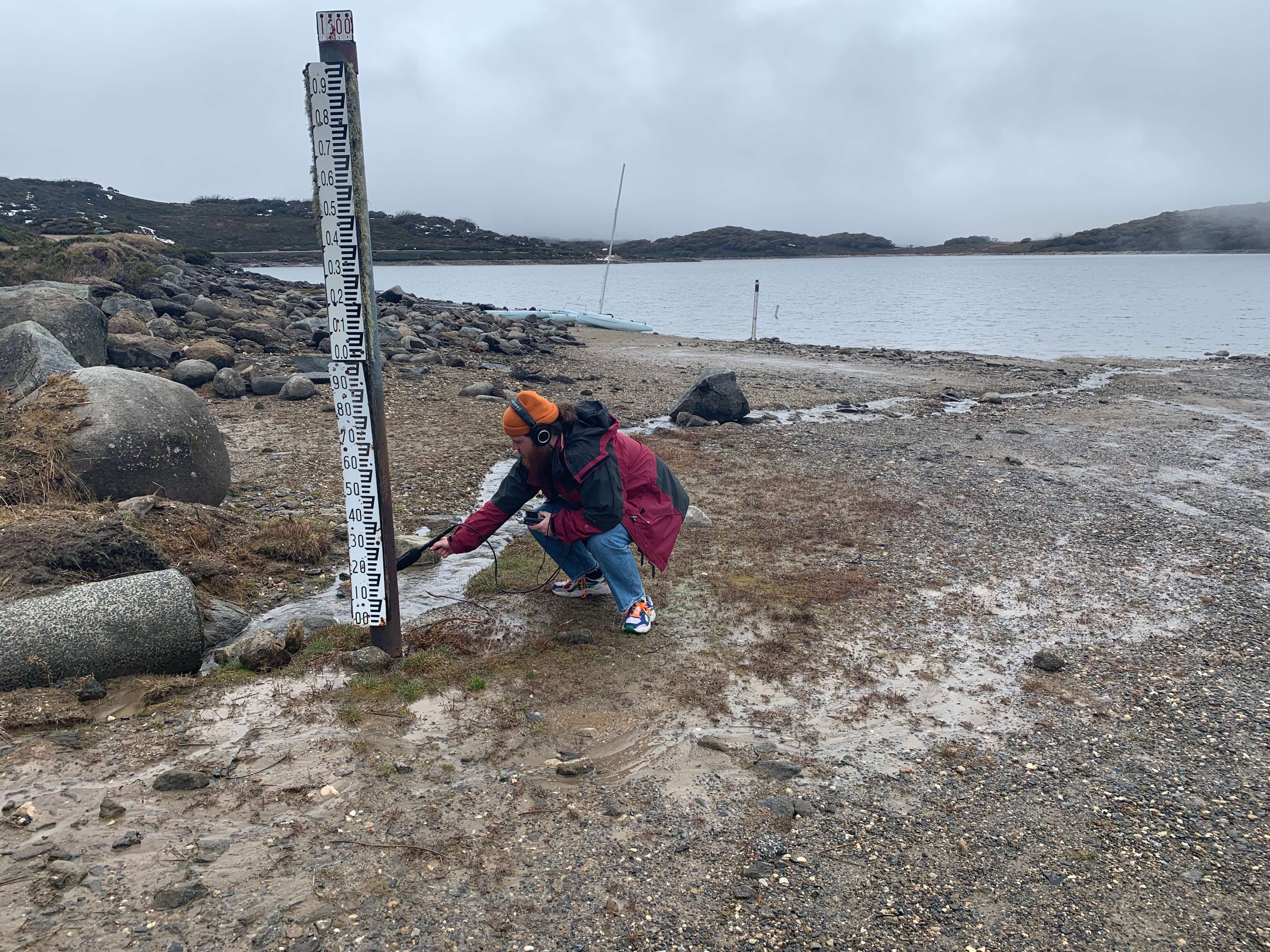
Jacob Agius is a multi-disciplinary artist, film composer and sound designer. Their work utilises field recordings, electronic sound production and audio processing techniques, focusing on deep listening, sonic textures, films and the intersections between the self and the unknown.
Their work has been screened and displayed at RMIT University and they have interned with the Bogong Centre For Sound Culture. Their previous major work, an audiovisual piece in collaboration with visual artist Haiden Nettle titled The Plight Of A Broomstick (2018) was screened at the Melbourne Town Hall accompanied by a live score for midi controlled grand organ, voice and heavy electronics.
Their next major work is a series of sound pieces titled Kyûketsu created during First Site Gallery’s ‘Out Of Site’ Residency in 2020. Composed from field recordings taken in 2019 on an art study tour of Japan with RMIT University and during their internship at the Bogong Centre for Sound Culture. Kyûketsu is set to be exhibited in an online publication by First Site Gallery showcasing works created during the ‘Out Of Site’ Residency.
Engagement
- Bogong High Plains Sound Map
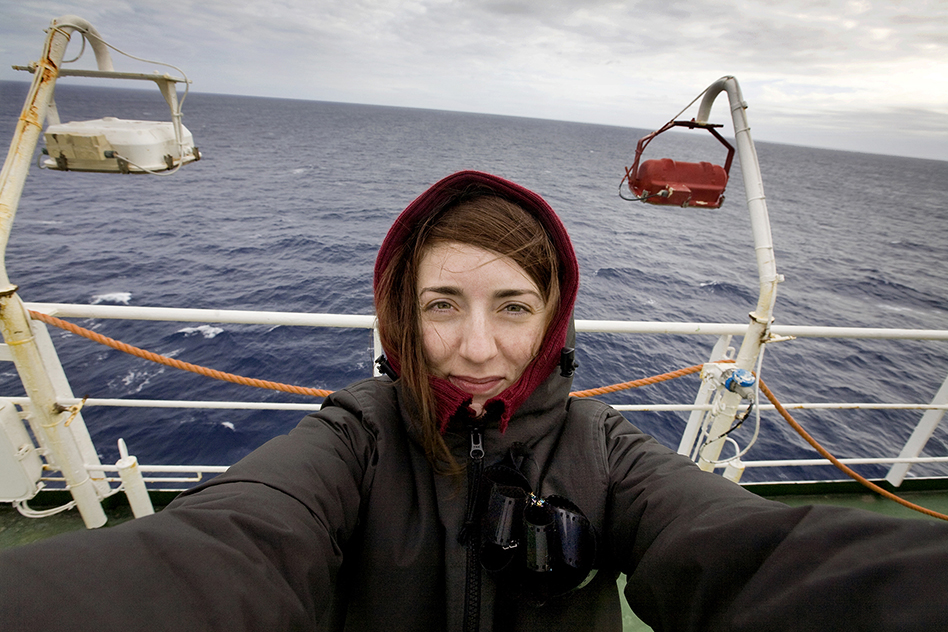
Daniela d’Arielli is a multidisciplinary artist based in Italy working in painting, photography and installation. Her research focuses on nature and reality, distortion and alteration, remembrance and memory investigated through the element water (or through different forms of the element water). After having spent a year at the Kent Institute of Art and Design (UK) in 2003 Daniela graduated in Painting at the Urbino Academy of Fine Arts. In 2015, she earned a specialization in photography from IED in Rome. She is currently professor of “Design of Color” at the ISIA Pescara Design. Since 2008 Daniela has worked as a photographer and art producer for Pollinaria, an organic farm and research organisation cultivating innovative, integrated work in the fields of art, agriculture and ecology located in Abruzzo, Italy.
Daniela is funded by the Instituto Italiano di Cultura – Melbourne

Jeremy Bakker is an artist based in Melbourne whose work is a contemporary expression of an timeless dilemma—how to make sense of a finite existence. Through a range of media—drawing, object, installation and photography—Bakker's practice explores the tensions between the fragmentary and the whole, the micro and the macro, the momentary and the enduring, and the impossible desire to hold on to what is fleeting and transitory.
Bakker has worked on projects in Australia, Japan, Thailand, the Netherlands and most recently in Austria for the RMIT SITUATE residency program.

Atticus Bastow’s project is an investigation into spaces of intersection between industrial and natural, where both are devoid of human presence. For this investigation he will spend the first week exploring the Bogong Alpine village, as well as surrounding areas including Falls Creek and Pretty Valley, in search of artefacts of the natural landscape, namely raw, unshaped stone, as well as industrial sonic artefacts found near or within the various infrastructure in the area. The investigation will culminate in an presentation of the collected components; using headphones and magnifying glasses. The presentation will invite an intimate layering of space and time through augmented sonic and visual presentation.

Matthew Berka is a Melbourne based audiovisual artist/filmmaker who makes expanded narrative cinematic works. These works are made through durational processes of patient looking and listening. Often returning to his longstanding walking practice, Berka deploys walking as a generative tool prior to the use of cameras or microphones. His work sits (un)comfortably in and outside of gallery and cinema spaces. Berka's work fuses and collapses audiovisual forms that breed from an intersection of place and psyche and over recent years he has made a number of long form/feature works as well as shorts and multi-channel installations utilising a variety of environments; from Icelandic landscapes to outer suburban interzones.
Supported by Bogong Village Accommodation

John Billans’ career in the visual arts spans more than twenty five years, during this time he has maintained an art practice with primary concerns involving Photography, Video, Sound, and new media with an interest in experimenting with the performative potential of new technologies. These include digital image production using ink jet technology, also exploration of the interface between the traditional and the new. He has worked closely and contributed to the migration from Analogue imaging to Digital imaging practices. He has been working on projects between Australia, Japan, Argentina and the United Kingdom.
Sponsored by Alltronics at 891 Princes Highway, Springvale, 3171
Engagement
- Project Residency 2013

Peter Blamey is a Sydney-based artist. His work explores themes of sound and energy, and the reimagining of technology. His practice is typically grass roots, and frequently involves establishing interactions between disparate everyday technologies in order to produce performances, artworks and installations that investigate the relationships between people, technologies and their environments, and question accepted notions of connectivity, variability and usefulness.
In 2014 Peter took part in the Instrument Builders Project, a collaboration between Australian and Indonesian artists, in Yogyakarta, Indonesia and also at the NGV in Melbourne. His work has been exhibited at Artspace, SNO, Serial Space, ICAN, Hardware, West Space, Merry Crisis, and iCAN (Indonesia). He has also performed extensively over the last sixteen years, including festivals such as Avantwhatever, What is Music, Electrofringe, Liquid Architecture, the NOWnow, Cementa_13 & 15, and ISEA, along with countless other shows. Peter is also one half of ‘fierce sound’ duo Hard Hat, with vocalist Kusum Normoyle.

Elise Bonato, multidisciplinary visual artist from Adelaide, SA, is a practitioner of the visual-aural arcane. Her predominantly experimental practice investigates contemporary notions and versions of the sublime and mysticism, through a synthesis of moving image, performance, installation, drawing and painting. Since graduating with First Class Honours in Visual Arts at the University of South Australia in 2012, she has exhibited locally in Australia (Sawtooth ARI, FELTspace, The Mill) as well as in the USA (Interstitial Theatre, NARS Foundation, Henry Art Gallery). Elise most recently lived and worked in Brooklyn, NYC, to participate in the NARS Foundation International Residency program.

Bories is a composer working with music, research and creative uses of sound. He's work encompasses acousmatic and electroacoustic concert composition, sound installations, theatre music, large-scale outdoor media productions, sound-architectural works and interactive art. Bories is interested in listeners hearing and feeling music and art through sound and temporal structure, rather than them needing to understand the complexity of my techniques.
Bories' project Gateway is supported by the Institut Français, Municipality of Toulouse and the Alliance Française in Australia.



Alex Braidwood is a sound artist, media designer and design educator who maintains a practice centered around a process of play, experimentation and research-through-making. His work explores methods for transforming the relationship between people and the noise in their environment.
Throughout the US and in Europe, Alex has exhibited work, led creative technology workshops, lectured on his research process, and performed live at a variety of events. Along with being Assistant Professor of Graphic Design, Alex is also faculty in the Human Computer Interaction and the Masters of Design in Sustainable Environments graduate programs at Iowa State University.

Sharyn is interested in understanding culture through a focus of sound based urban ethnography. I am particularly interested in the juxtaposition of the human voice and the sounds of the natural environment. Currently her work is investigating the notion of the sound bite. How a short 30-second recording of words may speak of one thing, yet, the same words can be edited, truncated and rearranged, then heard differently. Sharyn's work is as much an exploration of listening as it is of sound. With her partner she has renovated a 1983 Millard Caravan, The Grand Caravan is a portable purpose-built sound installation and arts venue.

Kat Be works as a conceptual visual artist. Her main focus is on photography. Ensuing from thorough research concerning a selected topic and based on a sophisticated concept she then implements her projects using photos and text. Being interested in everyday issues as well as in socially relevant topics such as sustainability she observes and combines but also arranges her material to enable observers to see familiar surroundings in an unusual way. She mirrors our presence as unpretentious as surprising: using her observation skills she analyses our daily life and lets us apprehend it in a way we rarely would perceive otherwise. Kat Be took part in various exhibitions and book projects. She is based in Berlin, Germany.

David Burrows is an audio-visual installation artist who trained in France at the Le Fresnoy National Studio of Contemporary Arts where he was mentored by Chantal Akerman and Ryoji Ikeda. He has been awarded many national and international residencies including being the Australian Antarctic Division Arts Fellowship (2011), the Cité International, Paris 2007-2009, Bundanoon Trust 2010.
For Bogong ELECTRIC David produced a photographic essay exploring the landscape as an experience framed through cultural and personal structures that limit and define our perception of the world. He worked stereoscopically to enhance the sensation of a contrived spatial experience and to continue his exploration of the mechanisms of human visual perception.
Engagement
- Supported Residency 2013

Ben Byrne is a scholar, musician and curator based at RMIT University who explores art, media and culture through technology, engaging the complexities of identity, media and environment. He has performed extensively in Australia and overseas over the past ten years and has produced and contributed to releases on labels such as Avantwhatever, Copy For Your Records, Splitrec, Wood & Wire and Factorvac. He makes installations, the latest of which, Murmur, is being presented at RMIT Spare Room Gallery in 2016. He is the director of Avantwhatever, a contemporary experimental music label that runs a series and festival in Melbourne.

Since 2003, Taiwanese artist Alice Hui-Sheng Chang’s work focuses solely on developing extended vocal technique in improvisation. Her vocal explorations include sound from varying tension of physical vocal parts, driving air into alternative passages and vibration of calls and breath.
Alice Hui-Sheng Chang has been involved in residencies in Australia, Taiwan, South Korea, France, Portugal and UK. She has performed or exhibited in Australia, Taiwan, South Korea, China, Hong Kong, France, Germany, Austria, Switzerland, Spain, Poland, UK and US. She regularly collaborate with other sound artists and artists from different mediums.
Engagement
- Project Residency 2011

Bridget Chappell is a sound artist and activist based in Naarm (Melbourne), Australia.
She founded and coordinates Sound School, a Melbourne community music school aimed at upskilling and celebrating electronic musicians on the margins. The School has become both an exciting hub for emerging creatives and an inclusive alternative to mainstream music education. She received the 2017 Music Victoria Best Experimental/Avante Garde Award for her work with Sound School. As Hextape (her solo project) she is published on Australian and European labels, touring both continents. Using a combination of software, hardware, voice, field recordings, and cello, Hextape pushes a harsher, faster agenda in dance music.
Her electronic practice takes the form of speculative fiction: where our worlds are heading both in society and the environment. It has taken her to Frontyard (Sydney) as artist in residence; Melbourne Fringe Festival as composer and sound designer; she collaborates with dancers, animators, and VJs; and plays in bands touring Europe and Asia including Fallow Ground and Threskiornis. She is one half of DJ collective Floating Three Stripe and co-organises biannual rave Vapor Noir. As a cellist she pursues a classical and experimental practice. She studies cello at the Melbourne Conservatorium of Music, teaches privately, and collaborates widely. She is founder of the Melbourne Squat Orchestra, a scrappy classical ensemble performing in acoustically interesting found spaces.
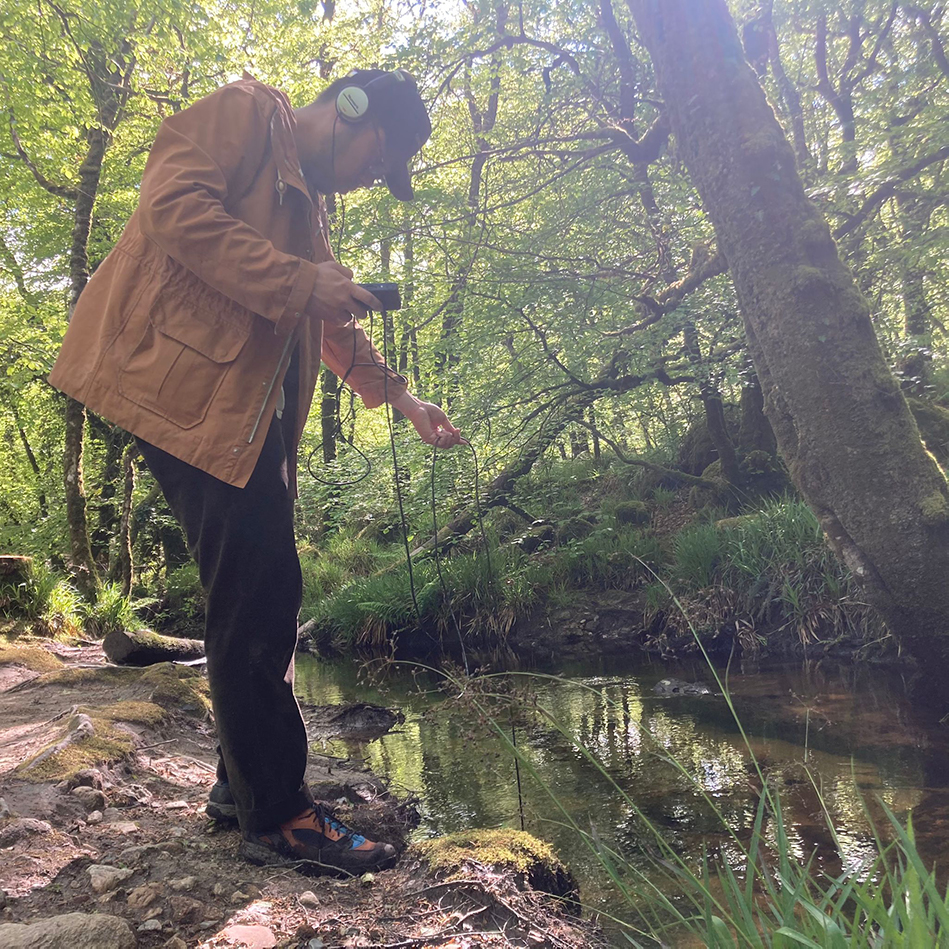
Benton Ching is an early-career Australian artist, designer and musician. He has a background in philosophy, and was trained in design engineering at the Royal College of Art and Imperial College London. Working across creative mediums, aspects of his practice include immersive technology, perceptual research and sound design, with a focus on experimentation and interdisciplinary collaboration.
Previously, he has worked as an in-house designer for artists Loop.ph and Es Devlin. His work has been exhibited in the UK at the London Design Festival, and internationally at Dutch Design Week and Milan Design Week.

Clara Chow is a writer from Singapore. Her short stories have appeared in the Asia Literary Review, CHA: An Asian Literary Journal and The Stockholm Review of Literature, while her columns and reporting have been published in The Straits Times and the South China Morning Post. In 2015, she co-founded the literary and art journal WeAreAWebsite.com. She is the author of Dream Storeys (Ethos), a collection of stories inspired by interviews with architects. A former writer-in-residence at the Toji Cultural Centre in South Korea, Clara blogged about the experience here.
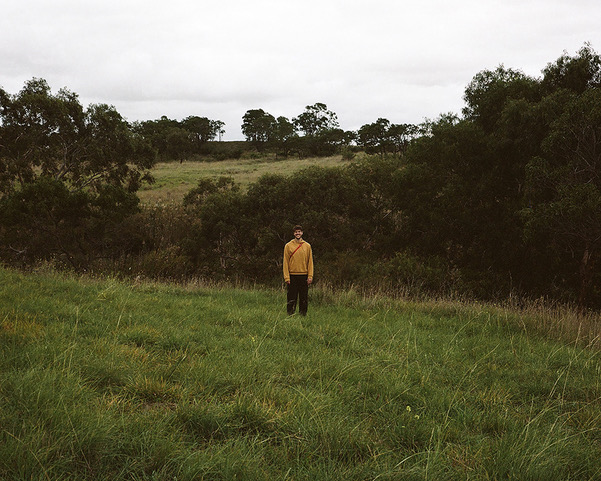
Aaron Claringbold is an emerging interdisciplinary artist currently based in Naarm/Melbourne.
Creating works that are predominantly photo-based, his practice focuses on land, land use, ecology and human presence within modern day Australia. In particular, he looks to explore the ways in which human impact and ideologies have shaped conceptions of ‘the bush’ and nature since colonisation, feeding nationalistic identities around place.
Reflecting on his positionality as a settler-descendant white Australian, Aaron is inspired by writers, thinkers, and artists making work that confronts the entanglement of ecocide and genocide, and the social process that engender them. He has a particular interest in practices that centre place-based bonding and responsibility, and that complicate the myriad of essentialisms underpinning the Australian Colonial Project.
This residency is supported by Creative Victoria through Regional Arts Victoria and the Sustaining Creative Workers initiative.

Kristen is a time-based video installation artist. She is a PhD candidate at the University of South Australia where she is researching experimental filmmaking and the application of immersive media in its practice. Her work has been exhibited nationally, including selection in the Hatched National Graduate Exhibition at the Perth Institute of Contemporary Art (PICA), SEVENTH Gallery Melbourne, SAWTOOTH ARI Launceston, the Sydney Underground Film Festival, and FELTspace Adelaide.

Shannon Collis is an interdisciplinary artist whose studio practise focuses on creating installations and interactive environments that explore various ways in which digital technologies can transform one’s perception of audio and visual stimuli. Her work has been exhibited widely across North America as well as in Europe, Asia, Australia and Brazil. Collis is a 2005 graduate of the Master of Fine Arts program at the University of Alberta, Edmonton, and has completed post-graduate research at Concordia University in Montreal in the area of Digital Media and Computation Arts. She is also a 2015 recipient of a Visual Artist Grant from the Canada Council for the Arts. Collis is currently an Assistant Professor at the University of Maryland, where she teaches digital media and sound.
Read A GUIDED WALK THROUGH THE CONTEMPORARY SUBLIME: SHANNON LEAH COLLIS’ KIEWA. KIEWA is an outcome of her residency at the B–CSC.
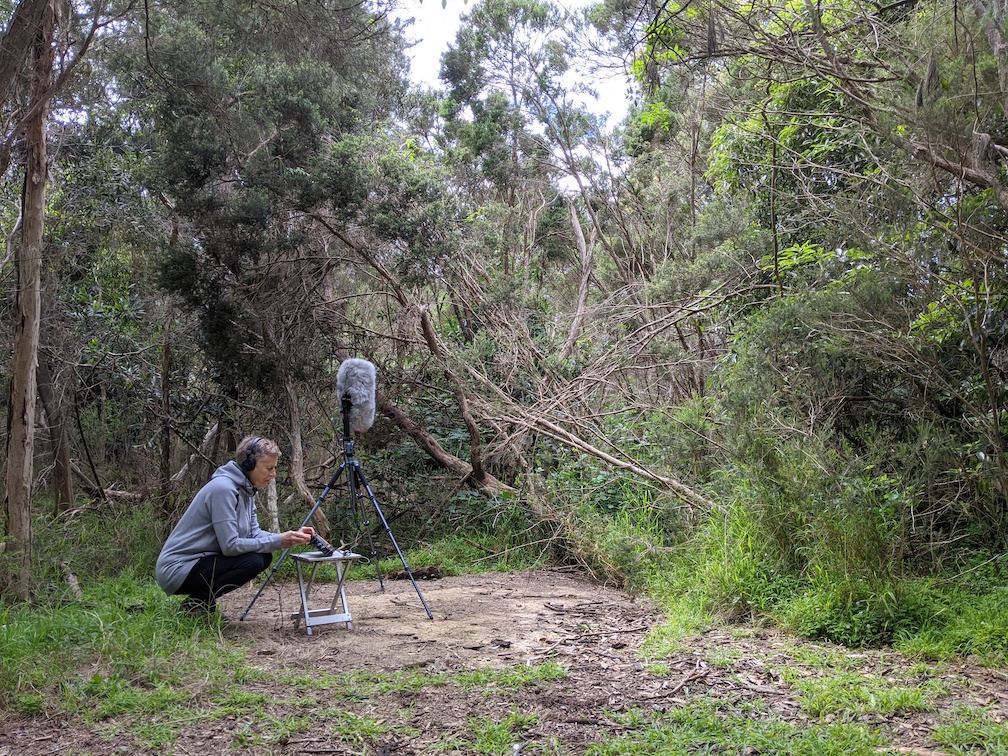
MADELYNNE CORNISH is an audio-visual artist and curator based in Bogong Village. Her works explore the effects of climate on natural and built environments, and the social dynamics informing remote communities. Madelynne employs duration, landscape and stillness as a means of responding to the temporal and spatial morphology of place. Her multi-layered and affective artworks are reflections of how humans engage with and define their environments. In addition to her art practice, Madelynne is the co-founder and director of operations for the Bogong Centre for Sound Culture, an independent arts initiative that facilitates cultural projects investigating the history and ecology of the Australian Alps.

Noé Cuéllar is a composer currently based in Chicago. His focus is on creating sound and music with air using various bellowed, pneumatic, and reed instruments like pump organs, accordions, and shruti boxes. Since 2009 Noé has developed preparation techniques and compositions for pump organs, as poured into a collaborative nexus with sound artist Joseph Kramer as Coppice. Noé’s current interests include creating new electronic instruments using physical modelling synthesis based off his work with bellows and air, and composing music pertaining to the sonic illusions of artificial air and its musical intermittence.

Byron Huang-Dean is a sound artist and experimental musician based in Melbourne. He creates compositions, installations and site-specific works that explore sonic environments and urban experiences through field recording. Situated at an intersection between the practices of acoustic ecology, acousmatic music and psychogeography, his work aims to re-imagine place and generate new perspectives of environments, through intricate and multi-layered soundscape compositions. Drawing relationships between the sound he collects, his works foreground an approach to field recording and composition that emphasize textural ambiguity and semi-narrative forms.
Engagement
- Supported Residency 2013

In 1990 Jim Denley was a member of Derek Bailey’s Company for a week of concerts in London. He co-founded with the electro-acoustic text/music group Machine for Making Sense. An emphasis on spontaneity, site-specific work and collaboration has been central to his work. He sees no clear distinctions between his roles as instrumentalist, improviser and composer.
He has played throughout Australia, Europe, Japan and the US with artists such as Laura Altman, Maggie Nichols, Carolyn Connors, Kari Rønnekleiv, Sidsel Endresen, Thembi Soddell, Natasha Anderson, Monika Brooks, Clare Cooper, Tess de Quincy, Ami Yoshida, Amanda Stewart, Ikue Mori, Satchiko M, and Annette Krebs.
Engagement
- Project Residency 2011

Lesley Duxbury was born in the UK, and has lived and worked in Australia since 1983. She uses print media—Photography and Printmaking—to make works that question our perceptions of the natural environment. Lesley’s research interests include sustainability and the natural environment, in particular the atmosphere and its phenomena, which she explores through work that emulates and recreates our experiences and perception of it. The phenomenological experiences of extended walks in remote landscapes, during which Lesley takes photographs and makes extensive notes, are the impetus for her investigations. She is also interested in the use of text in art and the role it can play in focusing attention and altering the readings of images allowing for a personal intervention and interpretation.
Engagement
- Project Residency 2013

Sarah Edwards is a Melbourne-based artist inspired by natural history museums. She has worked in the cultural heritage sector since 1990, is currently undertaking a PhD in the School of Art at RMIT University as a Research Fellow at Museum Victoria. Her art practice is concerned with transforming museum methods in order to re-animate the former spirit of natural history specimens using sound and light. By creating wonder, she aims to engage the viewer in remembered and imagined encounters with nature.

Working from field and studio recordings, Nigel is interested in the atmospheres and sonic phenomena of real-world environments, ”hearings" of place and its imaginative-perception. The atmospheres inherent to isolated sites in Tasmania - vacant dwellings, ageing infrastructure - in concert with the vicissitudes of wind, rain, snow – has been a significant influence, as has exploring environmental and cultural undercurrents in relation to their site-specificity. Many recorded projects have considered sites suffused with the experience of time and the residues of the past, enabling a space for reflection on the relationship between notions of quiet, cultural memory and listening.
Nigel is also an improvising musician, playing bowed double bass, and performs with the local Hobart improvisation community and other visiting interstate musicians.

Based in Melbourne, Geurts produces site-specific projects that draw out the dynamics of physical forces and geographic fields. Geurts’ practice locates ‘paradigms of measurement’ and ‘psychogeographic methods’ as they unfold over extended periods of field research. Through critical investigation Geurts focuses on conceptual lines in perception, and lines constructed within natural space, such as meridians, fault lines, tidal zones, flood lines, horizons, and orbitals.
Geurts’ work has been presented internationally by galleries including White Cube, London; GEMAK, The Hague; Centre for Contemporary Art, Tel Aviv; Art Gallery of South Australia; La Chambre Blanche, Quebec; Aurora, Dallas, and the Australian Centre for Contemporary Art, Melbourne.
Geurts is represented by Greenaway Art Gallery, Adelaide/Berlin and Contemporary Art Society, London.
Engagement
- Supported Residency 2018
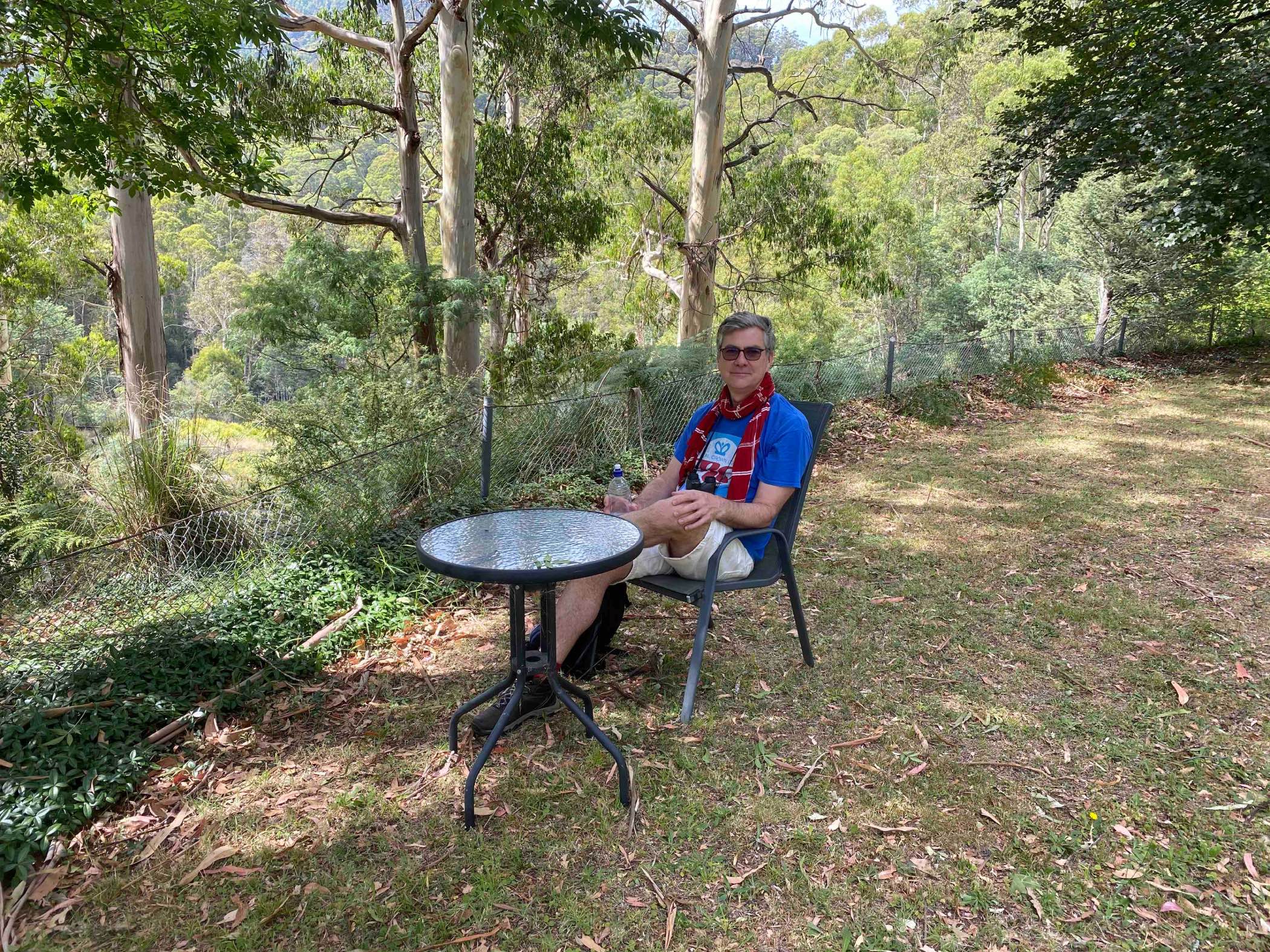
Victor Griss is a curator, creative and collaborator with over twenty years’ experience in public galleries. His tertiary studies in Visual Arts and Liberal Arts took him from Naarm/Melbourne to Ngambra/Canberra, Garramilla/Darwin, Gunbalanya in Arnhem Land and Chiang Mai, Thailand. While he has a particular interest in the visual arts, he is also passionate about music, cinema, literature, and cooperative games. He is currently a Foundation Member of the Thin Green Line Foundation, and committee member of The Melbourne Cinémathèque.

Rosalind Hall is a performer and composer, using sound, technology, improvisation and space as my mediums. She is interested in sound as both a tangible and elusive expression, in connecting with a moment in time, the collaborative experience, the body as a vibrating form, layers of meaning, states of awareness and the shared listening space between performer and audience. The sound worlds Rosalind creates in performance are bodily and organically evolving, using the saxophone with preparations to abstract and alter the sounds and playing techniques. She makes reeds from plastics and metals and place objects in the bells that become vibrating objects and extensions to the instrument. Rosalind uses the breath, saliva and gestures with small, sensitive microphones attached to her throat and horn to capture the sonic microcosm of her body and the internal world of her saxophone extension.

Amias Hanley is an artist currently living on Wurundjeri Country in Melbourne, Australia. Their practice uses sound and media to explore relations among queer ecologies, attunement, situatedness and speculative practices. Engaging forms of performance, installation and collaboration, Amias' work is interested in audition as an affective practice and the possibilities of sound and technology to support and alter the sonic expressions of humans and more-than-humans.

Kate Hill is a Melbourne based artist. Her practice explores temporal engagements with place, utilising site-specific materials such as earth, clay and water to express local contexts through ceramic processes. In the past she has sourced local clay and water from sites to create functional vessels, and in the process of excavation and refinement she explores the place that the materials are coming from, the stories that are held there and the broader environmental and political questions associated with larger scale industries using similar processes. The use of video and photography juxtapose her traditional methods of making, and provide vivid references to actions, stories and place.

Kate Hunter makes inter-disciplinary work that is stimulated by investigations into cognitive neuroscience, the body, the senses, diseases and dying, autobiography, talking to herself, sadness, and the strange territory of memory. She creates solo performance work as well as collaborations with other artists across a range of disciplines. She is interested in relationships between the brain and the body, embodied cognition and its relevance to physical theatre trainings and improvisation. Recently, Kate has been exploring the use of self-recorded monologues to perform intersecting narratives of live and pre-recorded story, memories and imaginings.
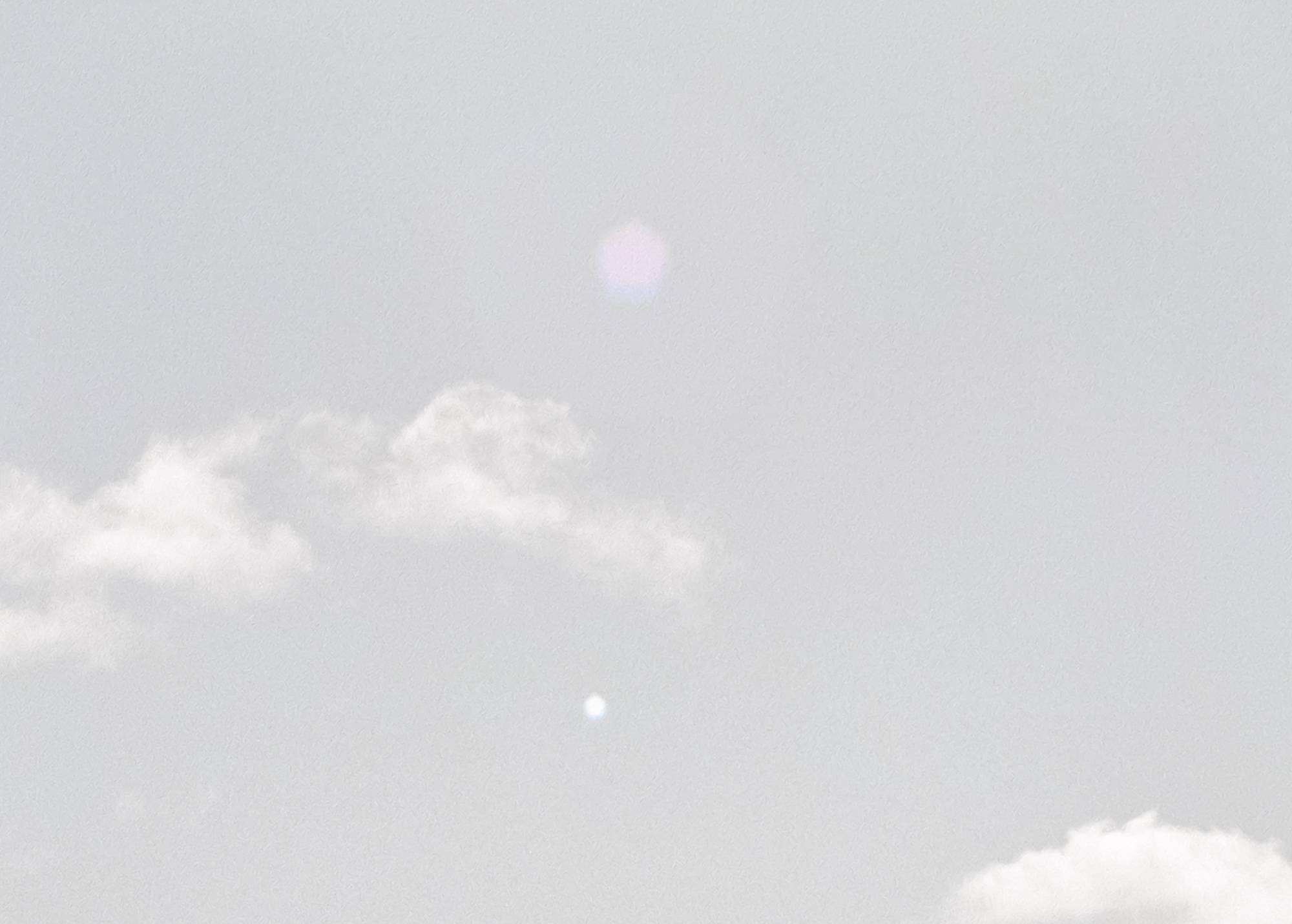
Rohan Hutchinson is a photographic artist and designer whose work researches the transformation of space and our relationship with the environment, both built and the natural. Hutchinson's work is an expanded practice, exploring the photographic image within gallery and publication settings, with the inclusion of event design.
In 2020 Hutchinson founded acb press, an independent publishing platform set up to educate and create conversations around photo book publishing and design.
This residency is supported by Creative Victoria through Regional Arts Victoria and the Sustaining Creative Workers initiative.
Thanks to Falls Creek Management for their support.
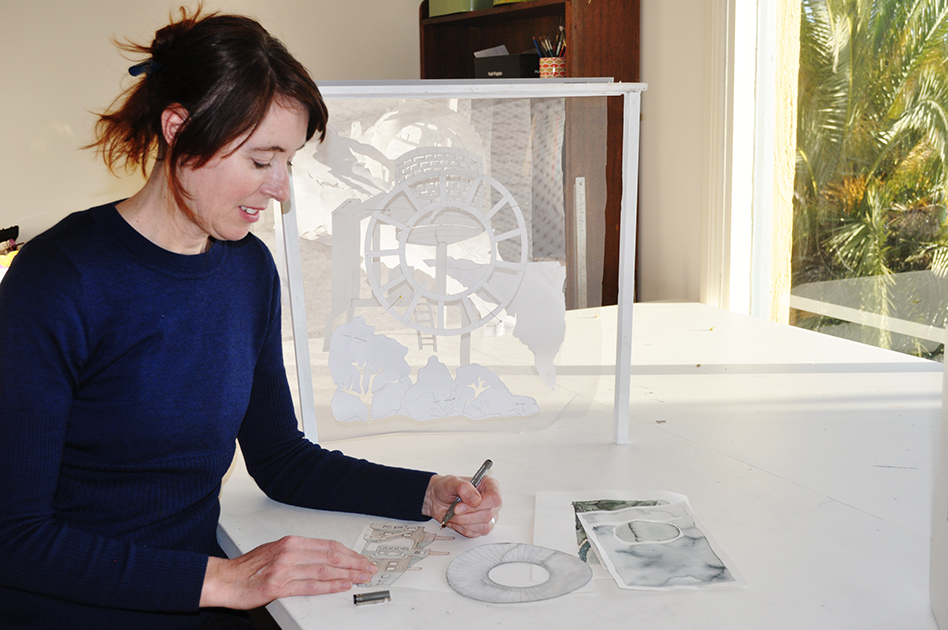
Emma Ikin is a visual artist who’s recent work includes large scale installations, projections and animation.
In recent years she has exhibited at Cube 37 Frankston Arts Centre, Brunswick street Gallery, Museo De Arte Decorative in Buenos Aires, Australian Centre for the Moving Image (ACMI) and been employed as a theatrical costumer for theatre, circus, television and dance companies around Australia.
She has designed and produced shows for the Melbourne Fringe Festival, Design Festa Gallery in Tokyo, Brisbane Festival, Melbourne Fashion festival and numerous exhibitions, installations and performances, including a participant in Craft Victoria’s Backstage Artist in Resident program.
Her film Pockets of Permanence, created with the assistance of a Frankston City Council Arts Project grant, screened in the 2023 St Kilda Film Festival, and she was recently commissioned to create and animation called Sunkland Junction for the 2024 South Side Arts Festival in Melbourne.

Leahlani Johnson is a Sydney based artist. Her current practice is concerned with the representation of the paradoxical nature of time. Working across the disciplines of ceramics, painting, installation, floristry and the moving image, she employs disparate materials to reveal opposing durational qualities of stillness, temporality and flux. Leahlani further explores divergent concepts of time through the process of making the work and in the final form an exhibition may take. With labor intensive and site-specific interventions lasting only briefly and exhibition lengths becoming extended or condensed in size. The passage of time becoming rearticulated through the work, reimagined from a linear formation into a more malleable substance.
Supported by Bogong Village Accommodation
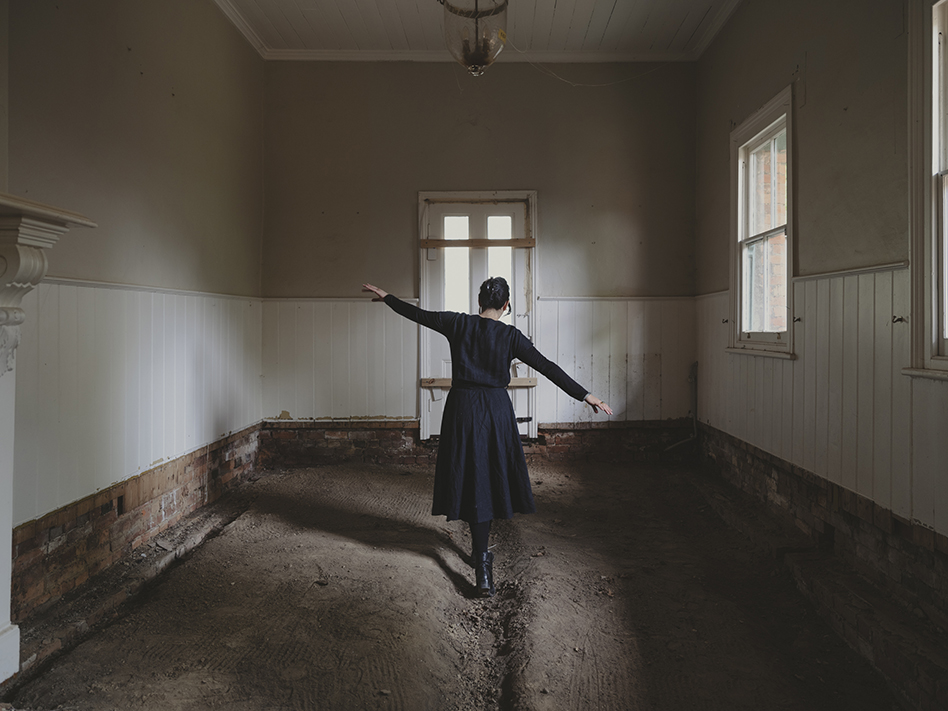
Pia Johnson is a visual artist, photographer, curator and lecturer living on Djaara country, Australia. Her practice is engaged in performance, transcultural identity and belonging, stemming from her mixed background of Chinese Italian-Australian descent. Her works have been awarded and exhibited across Australia and internationally and are collected in private and public collections including the National Gallery of Victoria.
Known as one of Australia’s distinctive performance photography and portrait artists for over a decade, Pia has commissions from all the major performing arts organisations in Australia. Pia received the 2023 Kerri Hall Fellowship for Performing Arts at the State Library of Victoria and was an Artist in Residence at the Immigration Museum Victoria where her project Re-Orient was exhibited in 2024.
Pia has her own podcast Out of the Frame: Conversations about Photography, which profiles contemporary photographers and artists speaking about their practice and photographic concerns today.

Korean artist Jungho Jung abstract visual explorations delve into different forms of the element water. From his wanderings into snowfields, around water dams and wonderings about his inner self, his practice is concerned with the tension between the visible and invisible, between being and nothingness.

Martin Kay is a sound recordist/artist/designer currently producing audio-montages and compositions that explore the intersection of architecture, psychoacoustics, social-dynamics and place. Martin's works are constructed primarily from un-mixed and un-edited environmental sound recordings, which he captures using a mixture of straight, extended and oblique recording techniques – probing the various unheard material realities, angles and perspectives of a given sound event, as well as providing a tactile space that has surface, texture and reflection, whereby the listener is sensitised to hearing as if it were touch. Through employing a technologically limited (recording focused) work methodology Martin has been increasingly motivated to find inventive ways of capturing sound and increasingly compelled to develop fresh compositional approaches that reflect his own psychological and emotional relationships to the places and situations he encounters.
Engagement
- Supported Residency 2015

Aidan Kelly is an RMIT Fine Art- Sound graduate and practicing sound artist/sound designer. Aidan’s work uses sound as a means of augmenting the way we perceive objects and space, often highlighting their darker side and adding weight to their existence. An extensive background in composition and performance with multiple Melbourne bands brings a decidedly musical aspect to his work. This coupled with an interest in interactive and subversive public art has already seen his work used in ad campaigns for Aesop and Myer as well as appearing in national art festivals such as Tasmania’s Dark Mofo.
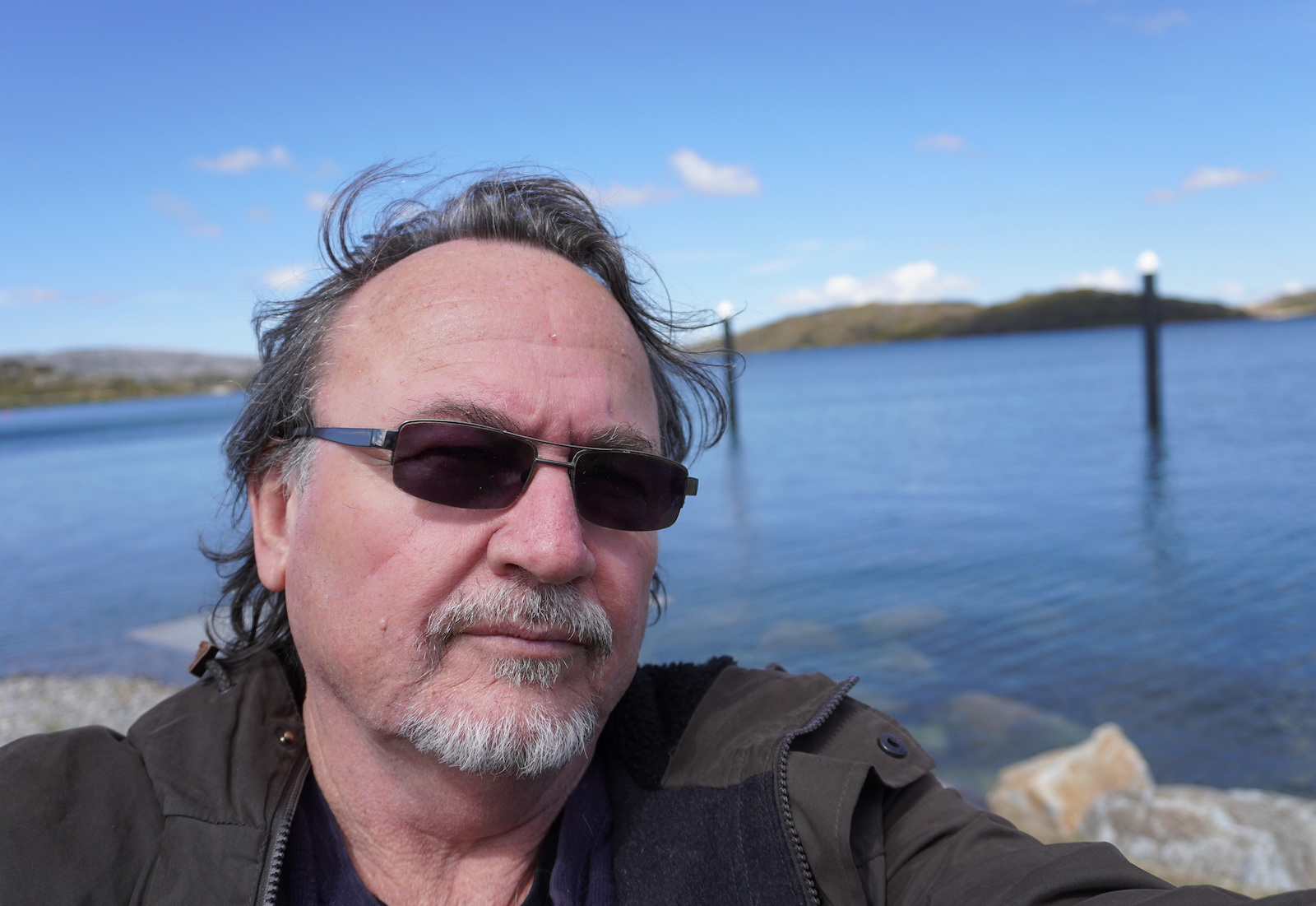
Julian Knowles is a composer, performer, media artist and researcher, specialising in new and emerging technologies. His creative work spans the fields of composition for theatre, dance, film and television, electronic music, sound design and media arts, popular music and record production. His practice-based research demonstrates a long-standing, high-level engagement with technologically- mediated music and sound practices and the relationships between audio-visual media. This has resulted in the creation of more than 50 innovative works that have been disseminated by high profile record labels, broadcasters and art institutions internationally. In the course of his career Julian has worked with many of Australia’s best-known musicians in the experimental music scene and has been a member of the Australian electro- environmental audio group Social Interiors since the mid 1990s. As a solo artist, Julian’s music and audio/visual works have been presented at events and venues such as the San Francisco Museum of Modern Art, Experimental Intermedia in New York City, What is Music?, Australian Perspecta, Liquid Architecture, the Melbourne International Film Festival, VIVID Sydney, and the Sydney Opera House. Julian is a founder and leader (with Donna Hewitt) of the mediatized performance group Macrophonics. Recent works include ‘This Visceral Landscape’ and the music and sound score for Wade Marynowky’s ‘Robot Opera’, Performance Space / Kaohsioung Arts Centre, Taiwan. Most recently, Julian’s work ‘The Billion’ was selected for the major international survey exhibition ‘Audiosphere: Sound Experimentation 1980- 2020’ curated by Francisco Lopez for the Museo Nacional Centro de Arte Reina Sofia in Madrid, Spain. Julian is a Professor of Music and Media at Macquarie University in Sydney, Australia, where he is also a Research Leader for the Creative Ecologies Lab – a research group for creative practice based researchers.
Dan Koop is an Artist, Curator-Producer and Facilitator working in public and unusual spaces. Creatively, he makes performance works in unexpected and public spaces that engage audiences to become participants. Professionally, he has worked for contemporary multi artform venues and festivals in Melbourne, Sydney, Brisbane and London. As a Facilitator, he has hosted conferences, lectured at universities and works as a conduit between community groups and arts organisations. He holds a Masters of Public Art from RMIT University and is undertaking a PhD with Deakin University. Sound works include ~FLOWING LOOPS~ (2024-25) walk & talk interviews and podcast archive along
the Suburban Rail Loop East; The Market Research tours at the South Melbourne (2020), Preston (2021), Gleadell St (2023) and Queen Victoria Markets (2023); and, Hear Hear pop up radio stations at swimming holes in Enoggera Reservoir - Brisbane (2018), HOTA Lake - Gold Coast (2020) and Golden Point Reservoir - Castlemaine (2021).
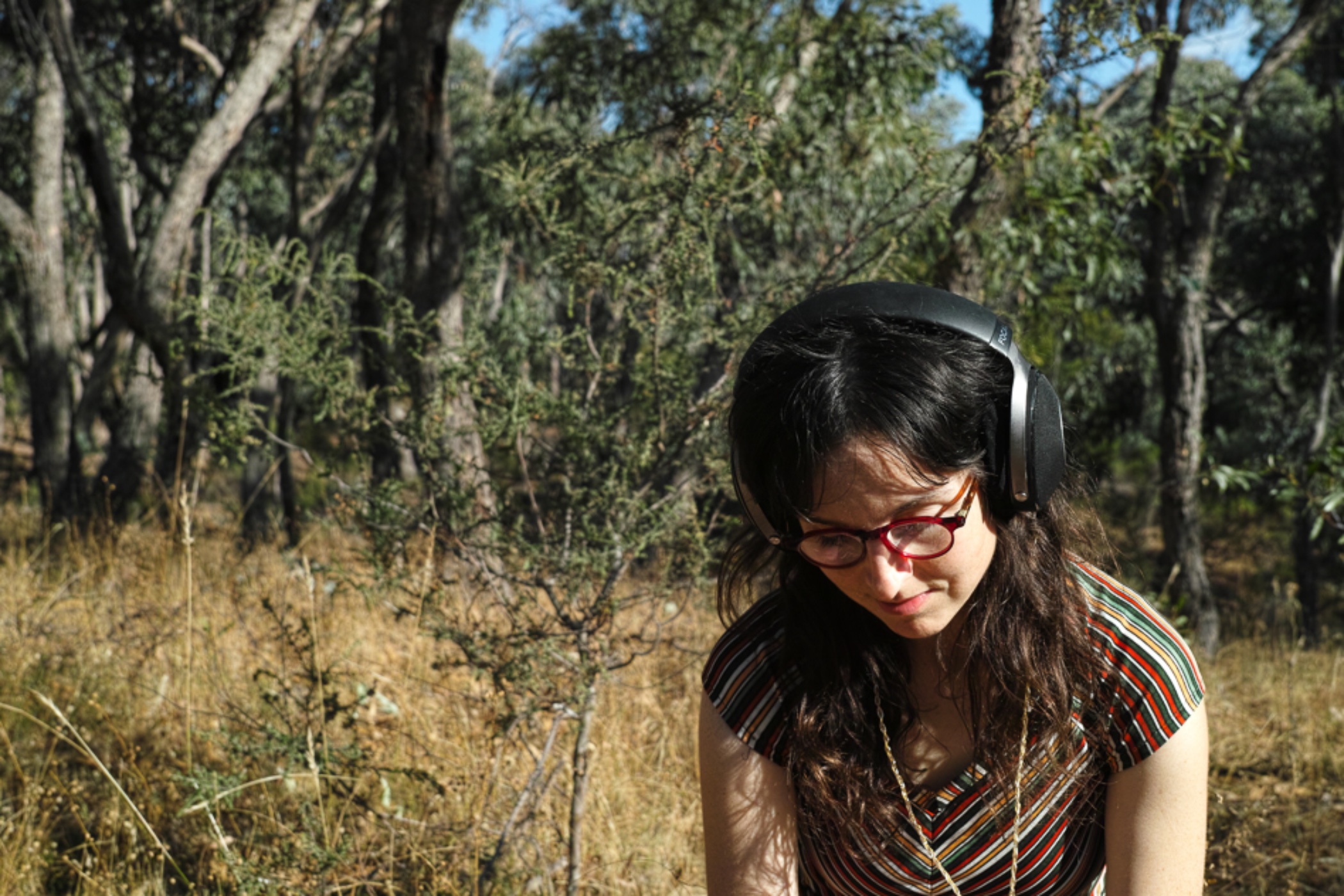
Emily Grace Kostos is an emerging multidisciplinary artist based in Narrm/Melbourne. She is of Irish and Greek descent. Her practice explores layered signification and the capacity for energetic forces to be transmitted via materials and process. Kostos works spatially to create installations through the mediums of sound, sculpture and painting to explore interconnections between personal knowledge, energetic forces and materials in order to generate new meanings. Kostos has trained in Classical Harp (Salzedo method) with harpist Xanya Mamunya and has worked across experimental music and live performance. Using expanded techniques, Kostos continues to re-define the harp's physical capacities. In her compositions, Kostos utilises geography, tactility, spatial configurations and movements.
Engagement
- Supported Residency 2025

Slavek Kwi is sound-artist, composer and researcher whose main interest lies in the phenomena of perception as the fundamental determinant of relations with Reality. He has been fascinated by sound-environments for the last 30 years, focusing on electroacoustic sound-paintings. These complex audio-situations are created mainly from site-specific recordings, resulting in subjective reports for radio-broadcast, “cinema for ears” performed on multiple speakers, sound-installations integrated into the environment and performances.
Engagement
- Project Residency 2011

Daniel Lercher is a musician, composer and sound artist based in Vienna. His practice deals with the subject of perception and conversion of aural sensations. His major interests lie in the creation of certain states for the recipients with an emphasis on the parameters of space and time, which he often tries to dissolve in favour of an in depth experience. Daniel works in the field of minimalism and its varied interpretations.
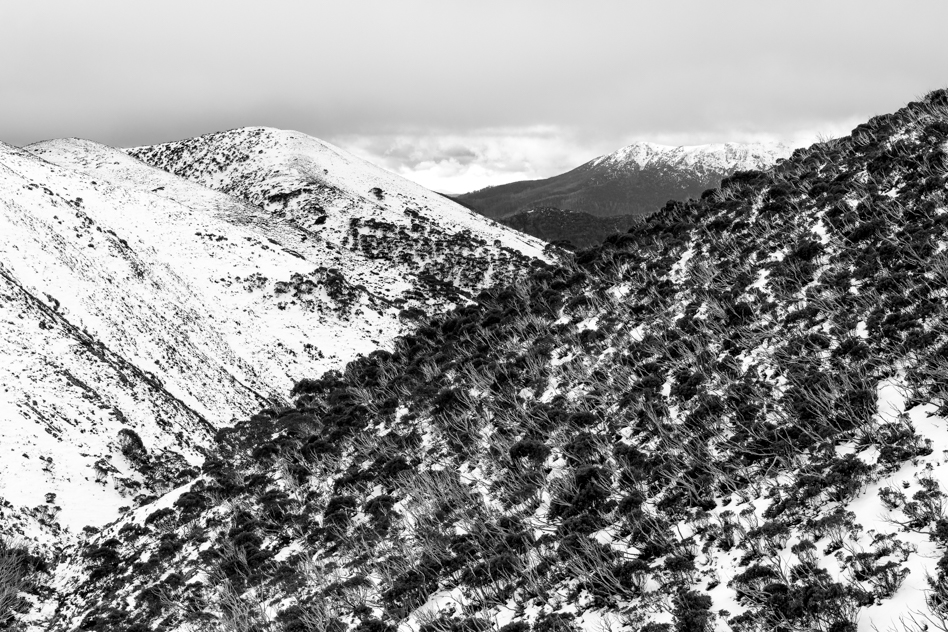
Sarah Lynch is currently based in Narrm (Melbourne) and works primarily across digital and analogue photography, video and installation. Sarah’s most recent work has been driven by a desire to record the nuanced, ever-changing and almost imperceptible flourishes in the human-altered landscape. Her work aims to unsettle notions of how nature has been traditionally represented in photography. Sarah is interested in the tensions between nature and culture in fragile landscapes and exploring ecological themes.
Sarah Lynch has exhibited nationally and internationally at Artist-run initiatives and public institutions. Sarah holds a BFA (Honours) at the VCA and recently completed her Master of Photography at RMIT.

Fiona Martin is a multi-disciplinary artist based in Melbourne. She creates works which focus on the human condition, social justice and what lies waiting in the wings and the shadows, patient for kudos. She uses empathy, education and laterality in her works in order to forge thought and insight. Fiona is, in no particular order: a poet, improvisational mover, dancer, installation artist, actor, director, teacher, fitness instructor and dance therapist. Her work often presses buttons and leans on boundaries, at other times it is subtle and quiet.
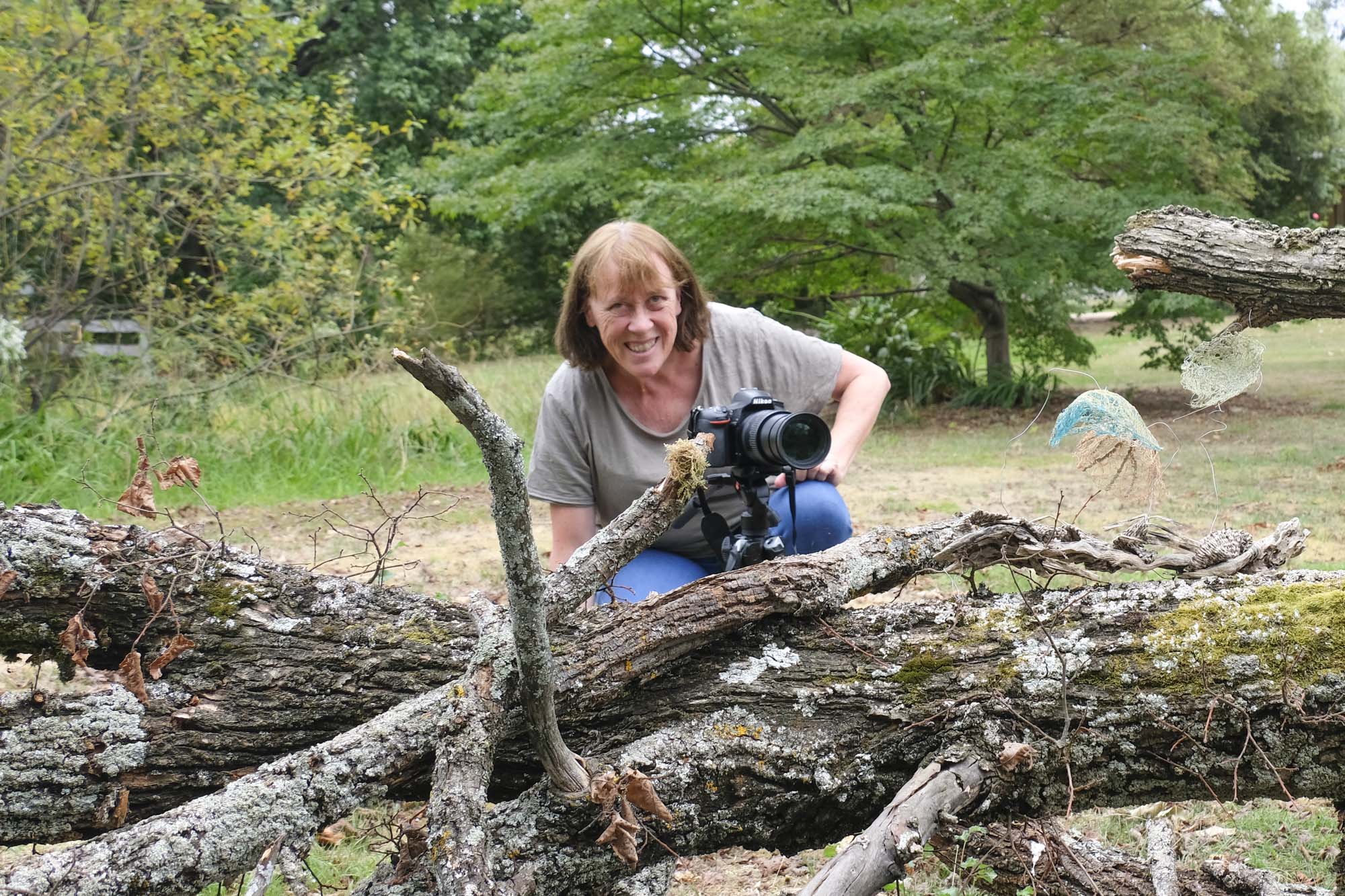
Anne McCallum is an artist living in Nug Nug, on Mogullumbidj land in North East Victoria. Working across textiles, sculpture, photography and video, she has exhibited at Centre of Contemporary Photography Melbourne; in World Cyanotype Day Exhibitions in Texas, New Orleans and Brisbane; at Kingston Arts; PSC Gallery Southbank; Brunswick St. Gallery and Head On Photo Festival Sydney. In 2020 Anne was an Artist in Residence Isle of Iona in Scotland.
Anne is currently finishing her Masters in Fine Art at RMIT University in Melbourne. Her focus on materiality creates a connection to origin and engages with natural cycles. She also works with meditative moving images to give a sense of duration to these hand woven abstract objects as they sit gently in the natural environment. Anne's slow flowing video works allow for drifting in a dreamy manner amongst these artefacts – creating a meditation in nature. Anne’s works look at the connections formed by threads and how they leave a trace and a communication with what came before and what can come afterwards. Exploring the interconnectedness of everything and the relationship she has with the local environment.

Adam is an active performer as a solo artist and with numerous international projects. His recent work is focused on exploring resonance and texture on the double bass, as well as developing new strategies for electroacoustic composition and instrument design, often using psychoacoustic research and embodied phenomenological approaches toward this goal.
As a composer, Adam has written acoustic and electroacoustic music for smaller and larger ensembles as well as theatre, sound installations, dance and film and has created 3D-printed sculptures generated by sound and movement.

Willy Merz is a Swiss born composer, academic and director of the Merz Foundation. During his residency he will compose a new work designed for a new international exhibition of art and concert series planned for Turin and Bern in 2015 focusing on environment, climate variations and global warming.
Engagement
- Micro Residency 2014
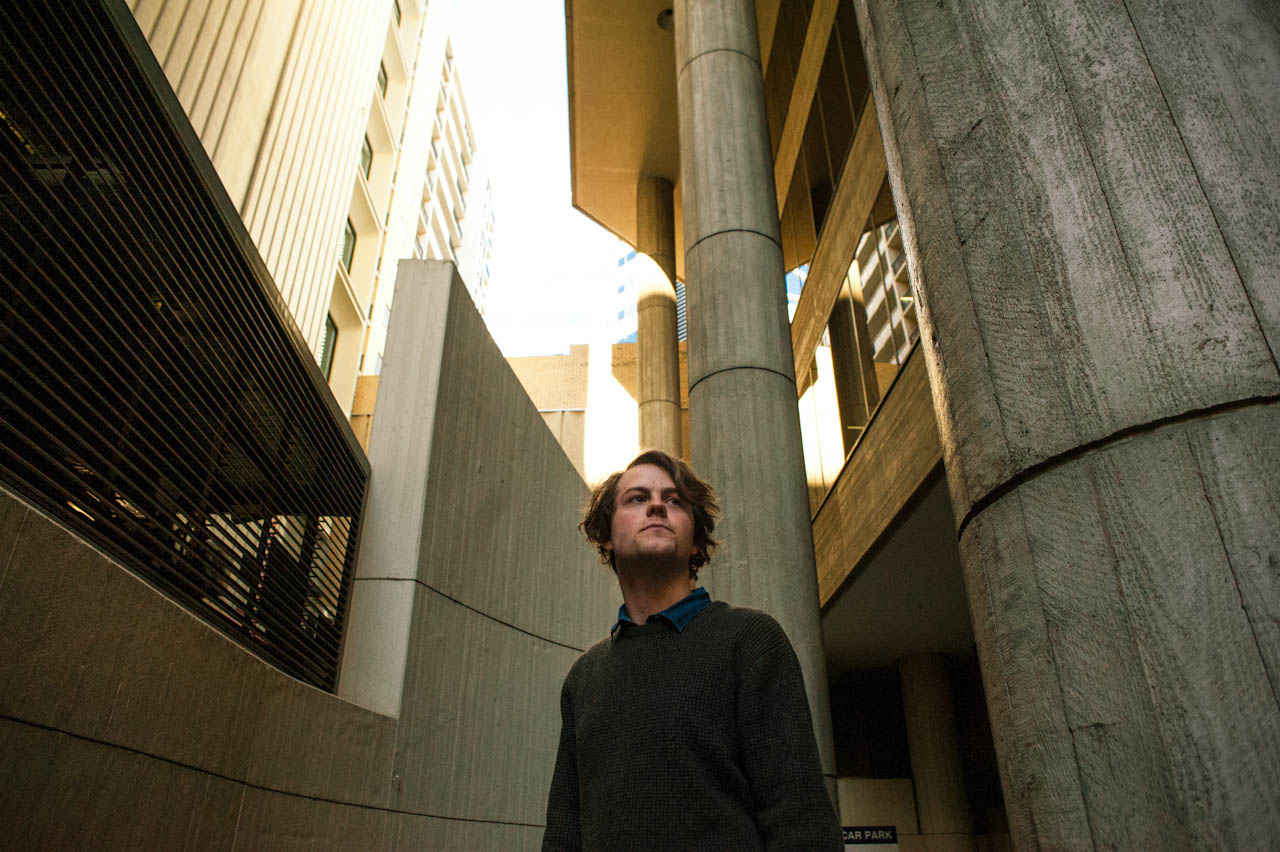
Josten Myburgh is a musician based on Whadjuk Noongar boodja in Boorloo (Perth, Western Australia). He works with saxophone, electro-acoustic materials, field recordings, and techniques from experimental composition and free improvisation. Josten is co-director of Tone List, a Perth-based record label for exploratory music, and since 2017 has curated their acclaimed annual Audible Edge festival. He has also curated programs for the Unhallowed Arts Festival (SymbioticA), Totally Huge New Music Festival (Tura New Music), Mandurah Arts Festival, and for Liquid Architecture’s Disclaimer journal.
He has performed solo and collaboratively in concert series and festivals including Perth International Jazz Festival, Fremantle Biennale, Supersense Festival of the Ecstatic (Melbourne), Festival Cable#8 (Nantes), Sacred Realism (Berlin), the NOW now (Sydney) and Inland Concert Series (Melbourne & Perth). He has released work on Another Timbre, Edition Wandelweiser and Flaming Pines. He has exhibited installation-based work or been included in group exhibitions at the Museo Nacional Centro de Arte Reina Sofía (Madrid), Ellenbrook Arts, and Cool Change Contemporary (Perth). His collaborators include Michael Pisaro-Liu, Sage Pbbbt, Eduardo Cossio, Emilio Gordoa, Lena Czerniawska, Joshua Pether & Daisy Sanders.
In 2019 he was awarded the Schenberg Fellowship.
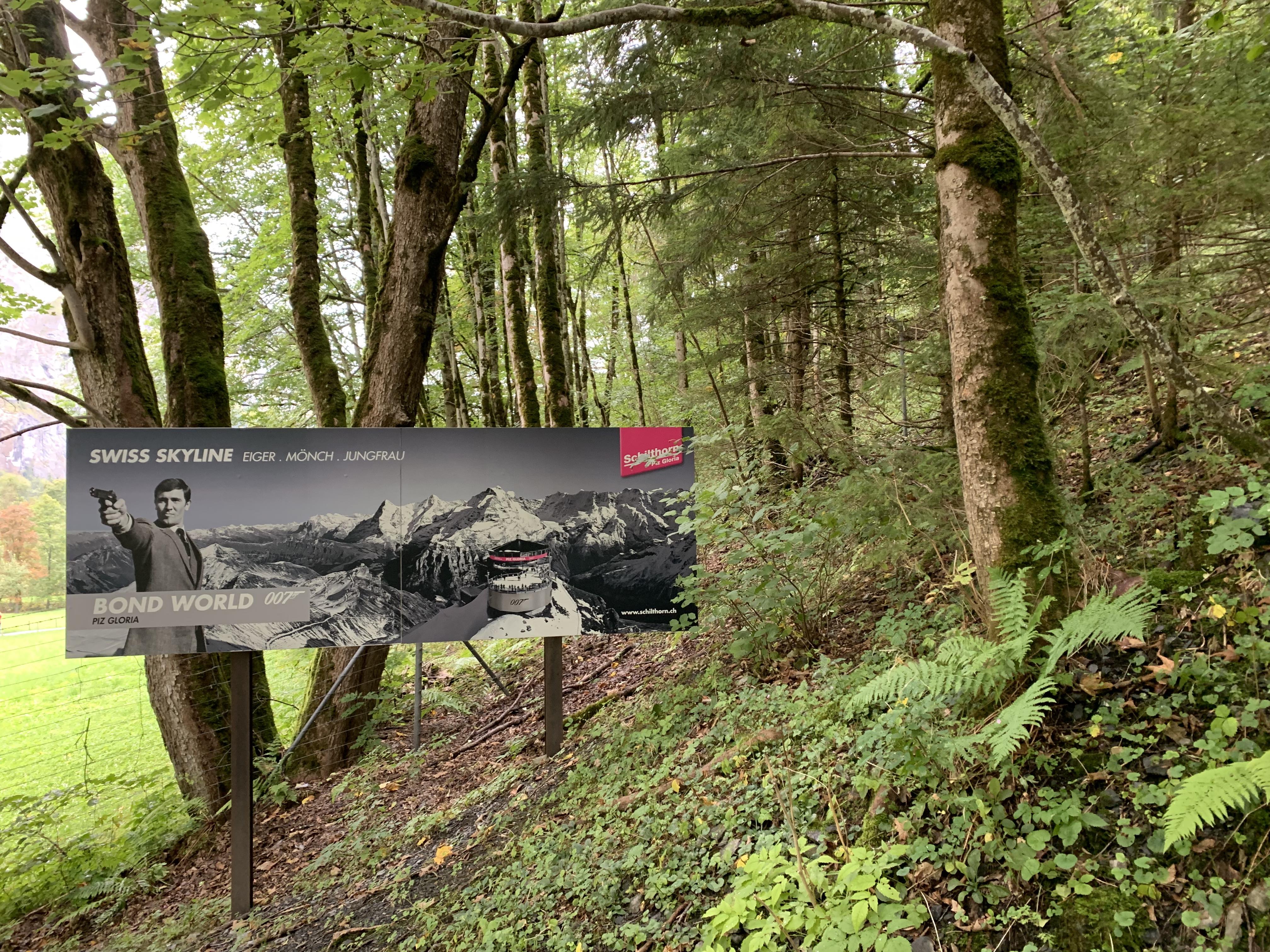
Paul Mylecharane is a graphic designer and web developer whose practice focuses mainly on the intersection of physical and digital publishing and its relationship to the archive. He works collaboratively under the name Public Office with people and organisations doing for and not-for-profit work in the arts, culture and education.

Eugene Perepletchikov is an independent film director, cinematographer and artist living in Melbourne. He has more than 10 years of experience working across productions in the commercial, education and arts sectors. His experience spans direction, cinematography, editing, compositing and delivery across all publishing formats. Increasingly Eugene’s focus is on exploring the intersections of art, science and theory through the moving image.
Eugene’s artistic practise combines the moving image with archival material to investigate notions of historicity, memory and emergence within social and physical systems. His research approach is transdisciplinary and central to his practice.

Justas Pipinis’ interdisciplinary practice is concerned with the human condition and sense-making. Through playful spontaneity, fuzzy framing and thinking through making, Justas tickles norms and conventions, exploring how we make sense of the world we live in. What gets our attention and why? How do we know what we think we know? Where are our blind spots? How do we deal with the unknown, the complex, the unexpected?
Justas was propelled into art practice by his anthropology studies at Stockholm University (Sweden) and Vienna University (Austria). He studied various artistic disciplines at Karlstad University, Konstfack and Umeå Academy of Fine Arts in Sweden and RMIT in Australia. His works have been experienced with and without institutional support in Australia, Austria, Germany, Indonesia, Lithuania, Mexico, Norway, Sweden, United Kingdom, United States, and the Internet. Justas has also undertaken artistic residencies at Not Quite (Sweden) and Bogong Centre for Sound Culture (Australia). Currently, he is a PhD candidate at RMIT University in Melbourne.

Leandro Pisano is a curator and researcher who is interested in intersections between art, sound and technoculture. He is founder and director of Interferenze new arts festival and frequently he is involved in projects dealing with sound art and ecology of rural and marginal territories, such as Liminaria. Among the sonic art exhibitions he has curated, there are “Otros sonidos, otros paisajes” (MACRO Museum - Rome, Italy, 2017) and “Alteridades de lo invisible” (Festival Tsonami - Valparaíso, Chile, 2018). He holds a PhD in Cultural and Post-Colonial Studies from University of Naples “L’Orientale” and he is presently Honorary Research Fellow at University of Urbino “Carlo Bo”.
Leandro is funded by the Instituto Italiano di Cultura – Melbourne

Lizzie Pogson’s practice involves the collection and abstraction of field recordings. By juxtaposing natural and synthetic sound material in different combinations recorded natural spaces act as environments for the inclusion of synthetic sounds and vice versa. Having trained as a classical violinist, many of Lizzie’s works are overtly musical.

Charinthorn Rachurutchata is a Thai digital artist whose practice revolves around issues of identity, psychology, surrealism and fantasy in children and adolescent. Her recent photographic installations depict costume dressing, cartoon characters and other subculture iconography to explore themes of childhood, escapism and loneliness. Charinthorn’s practice portrays the subject matter in a surreal fantastic way and draws audiences into a world of inconceivable events that shadow life. She makes visible what is overlooked and unheard in our society and world.
Supported by Bogong Village Accommodation
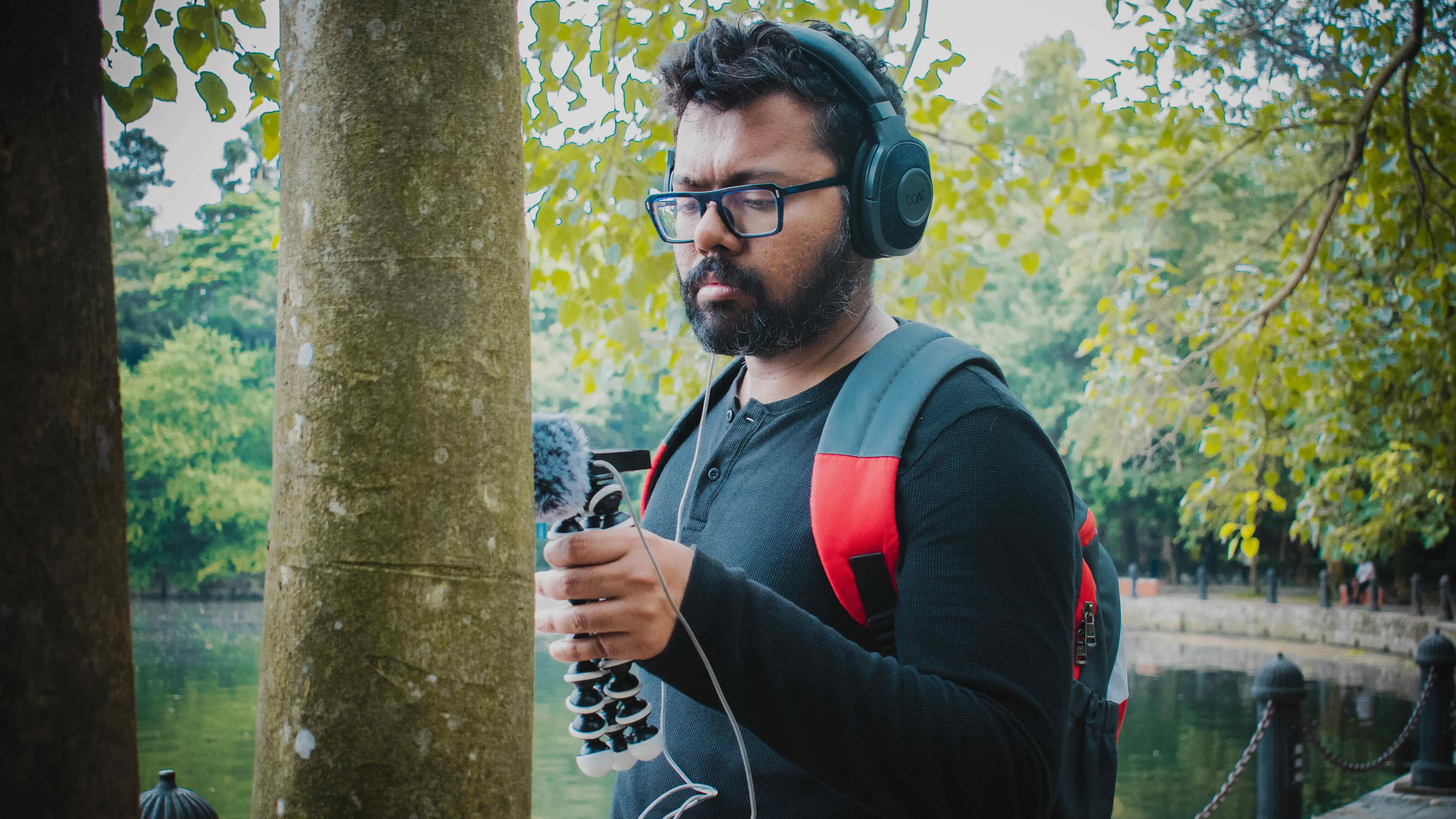
Pratyay Raha is a sonic arts and music practitioner with a keen interest in ecological transformation, field recording, sound arts, acoustic ecology, soundscape composition, critical sound studies, and ethnomusicology. He aims to develop artistic works that promote awareness, dialogue, and action for the preservation of endangered natural environments. He holds an MA in Composition and Creative Music Practice from the University of Limerick, Ireland, and is currently pursuing a PhD (Fine Art) at RMIT University, Melbourne, under the guidance of Dr. Philip Samartzis and Dr. Michael Graeve.
Apart from being a sound artist, he is also a singer and songwriter who explores traditional and new-age composition methods. He is passionate about collecting stories and songs and actively engages with various Adivasi cultures (indigenous communities) in India.
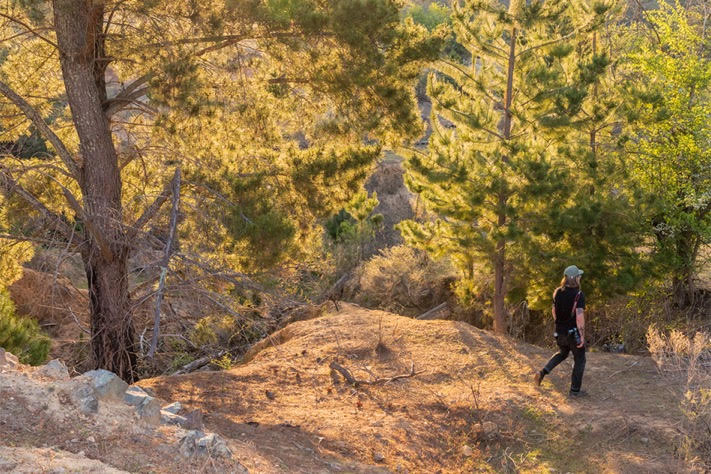
Jacob grew up in regional Victoria and New South Wales and is currently based in Bethanga, Victoria. Working across photography, sculpture, books, and installation, his practice examines the relationship between humans, the environment, and its resources. Through these explorations, he investigates how art can reshape and redefine perceptions of place and history. His work consistently engages with these themes by producing artefacts that confront abstract forces such as capitalism and climate change through a realist and documentary aesthetic.

Geoff Robinson creates process-determined works that involve sound mapping and duration. His practice investigates the transformation of sonic experiences into form and the charting of time through reflected light works and sound performance.

Connor Ross is a sound designer, composer and musician who focuses on space and auditory textures in his creative practice. With an ongoing focus on ambisonic and surround sound use in theatre, installations and music production, Connor’s work emphasises immersion within worlds. Some of his recent theatrical credits have included work on: Lobby Hero (Dir. James Vinson, Around The Moon Productions, 2019); Lake Disappointment (Dir. Gavin Rach, Melbourne Fringe, 2019); My Wife Peggy (Dir. Gavin Roach, Gasworks Premiere, 2019); We Were There (Dir. Dirk Hoult, Tilted Projects, 2018); Macbeth (Dir. Simon Phillips, Melbourne Theatre Company, 2017).
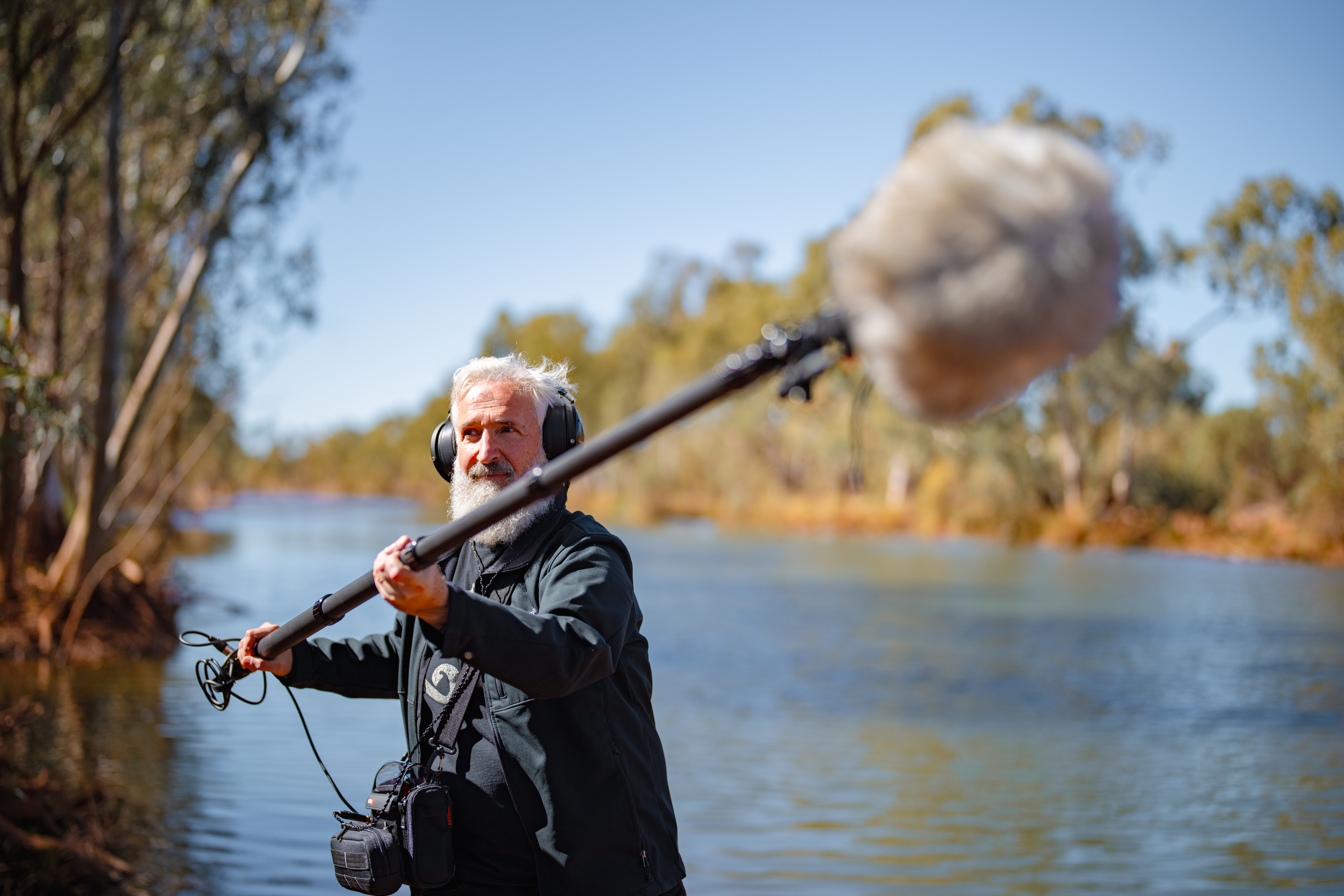
Philip Samartzis is a sound artist, researcher, and curator whose practice investigates the social and environmental conditions of remote regions and marginalised communities. Working across Antarctica and sub-Antarctica, the Swiss and Australian Alps, and the Kimberley and Pilbara regions of Western Australia, he uses advanced audio technologies to register environmental change in some of the world’s most fragile and dynamic ecosystems.
He has been awarded the Australian Antarctic Territory Fellowship three times and is currently leading a twenty-year longitudinal sound study of Antarctica, documenting the continent’s shifting sonic ecology. This research is contributing to a forthcoming coauthored book with Carolyn Philpott (UTAS) on Antarctic soundscapes, to appear in Cambridge University Press’s Elements in Arctic and Antarctic Studies series. In recognition of his contribution to environmental understanding through sound, Samartzis received the 2021 Australian Council of University Art and Design Schools Distinguished Research Award and was featured on a commemorative $2.20 postage stamp by Australia Post celebrating the Antarctic Arts Fellowship.
In 2019, he undertook a Swiss National Science Foundation Fellowship at the High Altitude Research Station Jungfraujoch, with outcomes featured in The New York Times and Deutsche Welle Radio. Recent projects include Concealed Spaces— supported by a Creative Australia International Engagement Grant—exploring Cold War architecture and subterranean soundscapes in Valais, Switzerland, in collaboration with the Verbier 3-D Foundation and the Valais School of Art. His current commission for the Anna Polke Foundation’s Athanor NOW initiative reimagines processes of transformation and material change central to Sigmar Polke’s practice, translating them into an acoustic investigation of the thresholds between art, science, and environment.
Combining art and research, Samartzis positions sound as a critical means of sensing and interpreting environmental and cultural change—offering new ways of knowing and listening to conditions at the edges of the world.
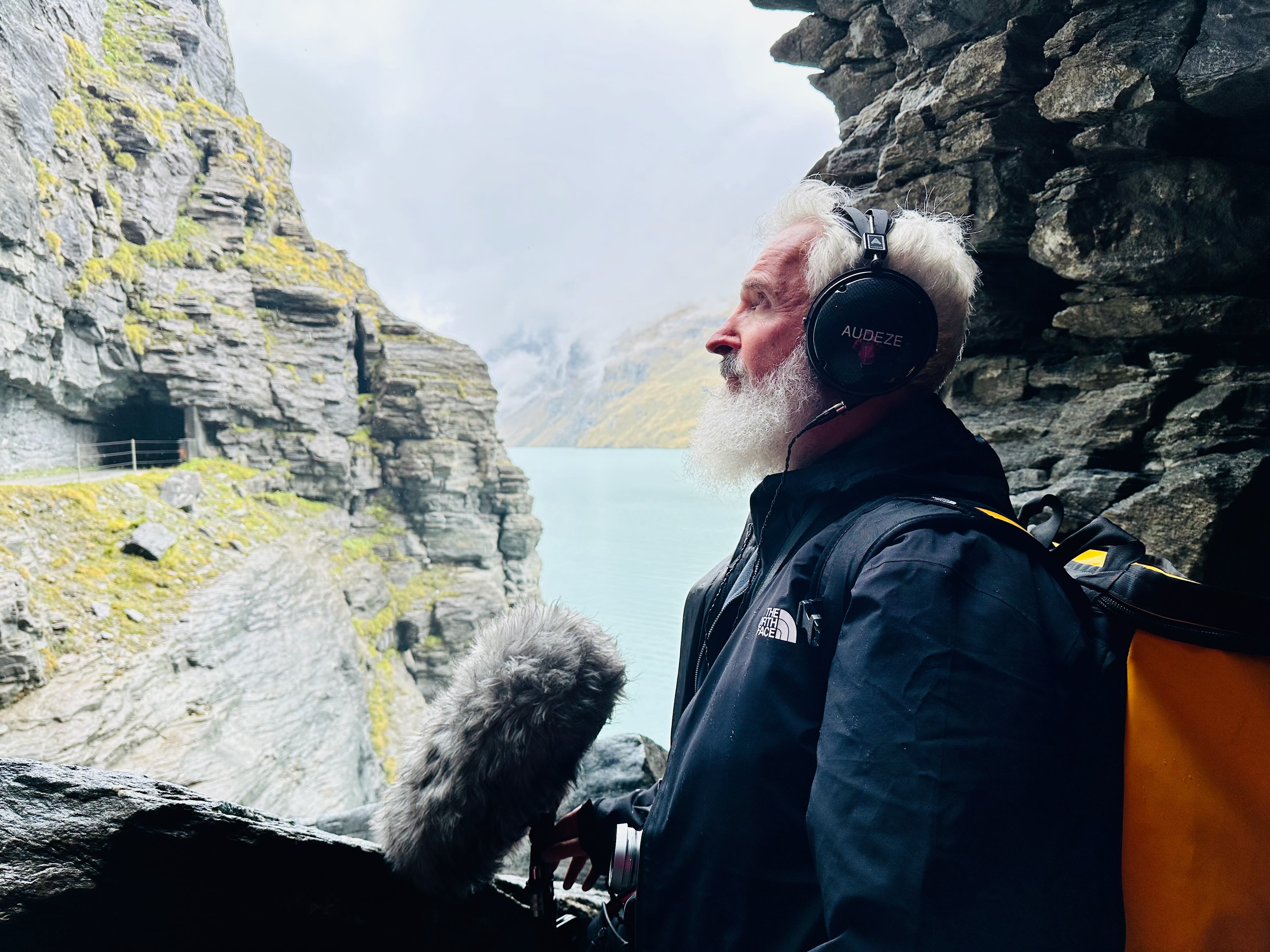
Journal

Hidden Places deals with descriptions of landscapes. The hidden place here may be small enough to fit into your palm, or it may stretch between horizons. A sense of space meets up with the notion of a frame of mind. There are accordances between inner topographies and outer environment that people call magic. Hidden Places investigates these spaces which begin to unfold as the people tell about these places.
Gabi Schaffner (1965). MA literature , photography, ethnography. Works as an interdisciplinary travelling artist within the realm of sound art, composition and poetic documentation.
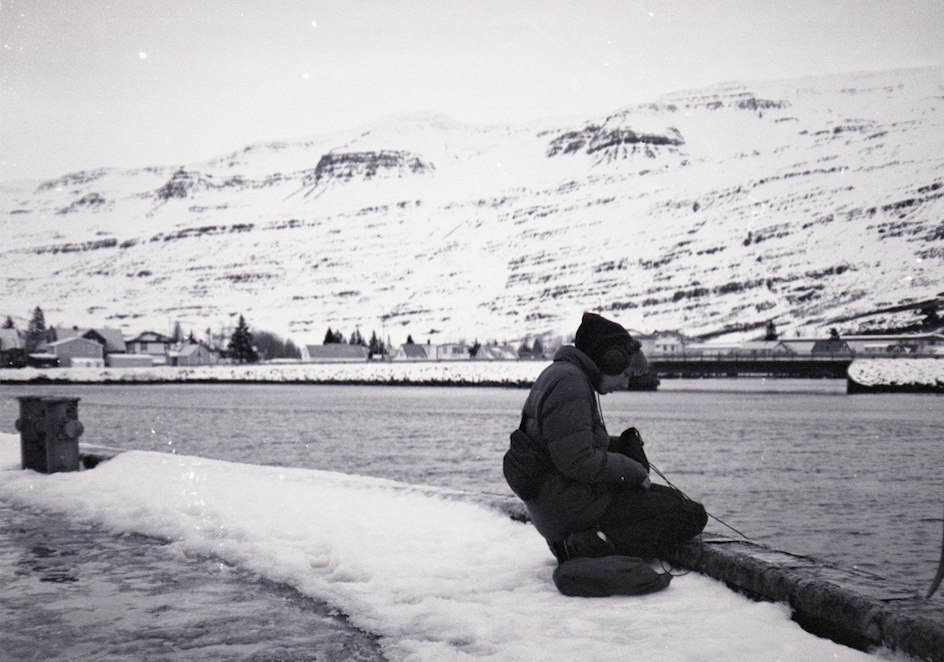
Mara is a sound artist and composer creating performed pieces, and commissioned soundtracks for dance, film, and installations. Her practice explores the crossover between physical and digital environments through the use of field recording and digital manipulation. As well as working with sound, Mara’s practice extends to print making, poetry, curating, and coding, frequently mixing these mediums to create works with an emphasis on world building. Informed by interactions and perspectives within environments, her work questions the coexistence and understanding between those who inhabit them.

Jacqui Shelton is a Melbourne-based artist. Working in video, photography, performance, and writing, her work seeks to establish a relationship with the temporalities of communication, labour and repetition. Jacqui’s interest in the politicisation of time takes form through poetic exploration of repetition, narrative, delegation and physical activity. Her current research focuses on post-work politics, laziness, and practices of alternative temporal relations to our current understanding of work from a western perspective.

Utako Shindo is an artist who is based in-between Tokyo and Melbourne. She is interested in art’s ability to enable anyone to experience perceiving and reflecting on the world in a richer and more poetic manner. Through her recent research project, she investigated concepts of ‘untranslatability’, and considered the untranslatable as a poetic place characterized by fertile silence and nuanced shadow. Her installation artwork, comprised of projections and imprints, attempts to articulate this, and prompting poetic translation between image and material, sound and texture, and subject and object. Utako’s practice also includes organizing trans-cultural art projects.
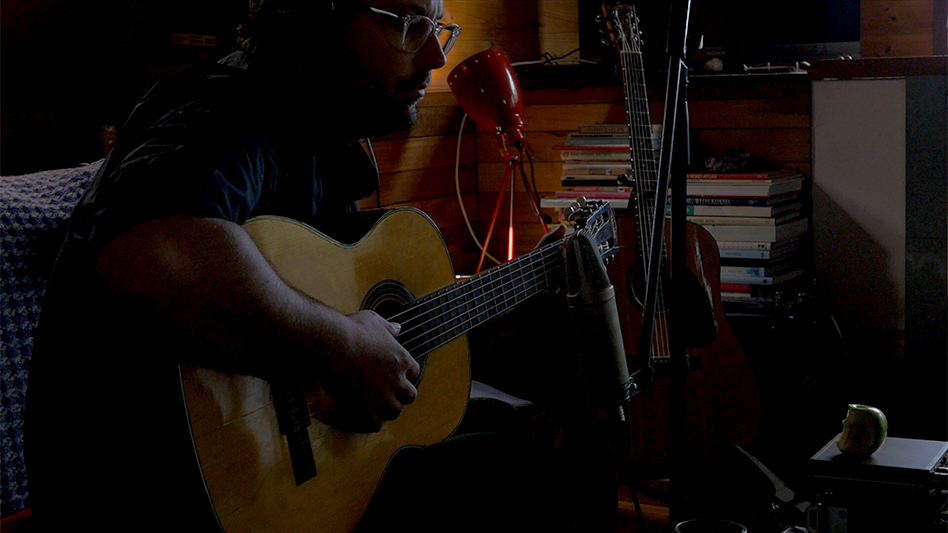
Lehmann B Smith has been an active part of the Melbourne Music scene for 16 years, touring domestically and internationally with bands such as Totally Mild, Laura Jean, Pikelet, Grand Salvo and Kes Band. He is an instrumentalist and industrious songwriter, having released seven albums in 9 years. Lehmann is experimental, prolific and unbound by genre. His music has been inducted into the National Film and Sound Archive, and received nominations for a Music Victoria award, and Australian Independent Record award. Lehmann has supported international acts such as Bonnie Prince Billy. In 2018 he performed at the South by South West festival in Austin, Texas.

Polly Stanton’s practice utilizes photography and the temporal mediums of video and sound to investigate cinemas power to shape and reflect human experiences of place and environment. Stanton’s work employs duration, cinematic codes, and landscape to consider the intersection between the spaces of film and the spaces of geography.
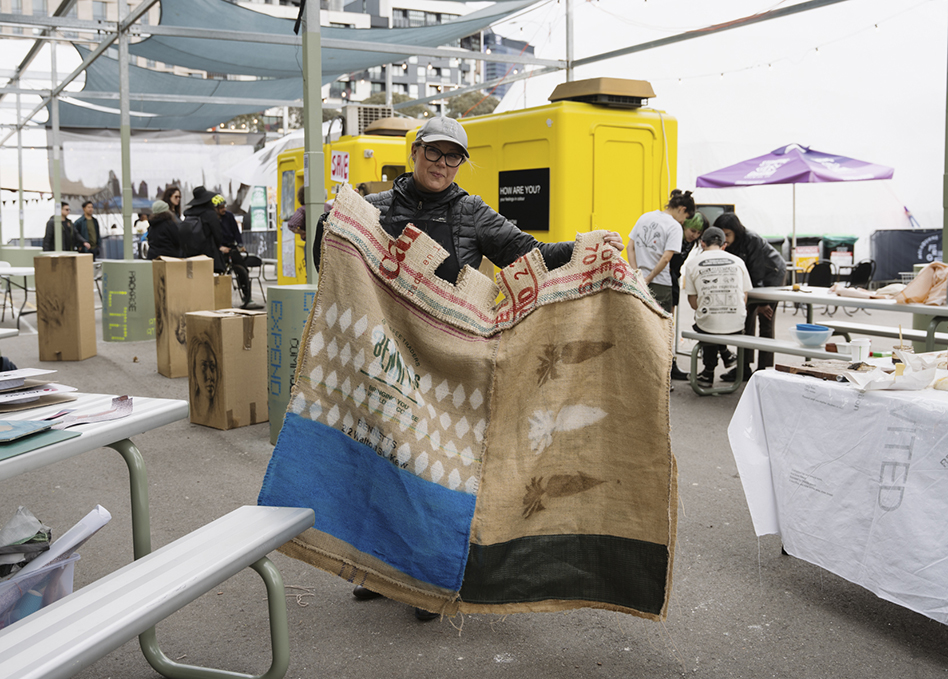
Linda Studena is a Czech born artist based in Naarm, on the unceded lands of the Bunurong Boon Wurrung and Wurundjeri Woi Wurrung peoples of the Eastern Kulin Nation. Her studio practice is framed by autoethnographic enquiry informed by her migrant experience. She works within an expanded practice using drawing, photography and sculpture to look at ideas of identity, nostalgia and representation, through personal and public archives. Linda was recently awarded the People’s Choice Award – Incinerator Art for Social Change 2023, the Melbourne University Graduate Student Association Innovation Award and Masters Mentoring VCA Art Award and completed a Master of Contemporary Art at the Victorian College of the Arts in 2022. Linda is the co-founder and former President of the Czech and Slovak Film Festival of Australia, and in 2002 completed a winter semester at the Academy of Fine Art in Prague (Czechia), funded by the Freedman Foundation Scholarship, National Association of Visual Arts.

tarab explores re-contextualised collected sounds and tactile gestures formed into dynamic, psycho-geographical compositions inspired by discarded things, found things, crawling around in the dirt, junk, the ground, rocks, dust, wind, walking aimlessly, scratchy things, decay and most if not all the things he hears and sees. More than simply documenting a given site, tarab is interested in a direct engagement with our surrounds, teasing out half narratives, visceral sensation, false leads and heightened awareness.
tarab presented a hyperreal composition, created from sounds collected, foraged, coaxed and dragged from Bogong Village. Designed to sit along side and underneath the village’s existing soundscape but to be listened to from within it.
Engagement
- Supported Residency 2013

Erin K Taylor's practice creates social and psychophysiological disruptions within the local perceptual environment, reinforcing the body as site of production of her work. Interrupting the passivity of the spectator through the use of participatory strategies, Erin's works are designed to invite engagement rather than inflict it in an examination of alternate power models.
Informed by a dual practice as drummer/electronic musician she creates work focused on rhythm and noise aimed at extending listening practices and drawing attention to one’s self as a part of the surrounding environment.

Michael Terren is interested in field recording as a practice of deliberate aesthetic and technical construction, eschewing the objective/documentary status of many field recording works. This process of prioritisation and selection of certain sounds to record—and thus the process of suppressing “extraneous” sound—is fascinating in its oblique reflection of our own perspectives of sound in everyday life.
Michael explores this theme by placing loudspeakers directly in the environment of a field recording situation, playing a variety of synthetic sounds and other field recordings. This practice engenders new dialogues between loudspeaker and microphone—the two central media of our contemporary experience of sound—and calls into question the proprietorship of sound in natural environments, the ethics of sonic “contamination,” and the politics of the “hi-fi” soundscape.

Tetzlaff’s practice looks at ways in which barely visible or the intangible energies—things such as the weight of air, the force of gravity or thewarmth of light—mark and are revealed through material. By juxtaposing photomedia with simple objects or processes his work is an effort to poetically draw out and manifest the small complexities of the world around us.
Tetzlaff is an academic, artist, curator and currently a PhD candidate at RMIT University. He has shown work in exhibitions in Australia, the United States, Japan, Austria and Germany.

Diego is a Colombian-American Brooklyn-based multidisciplinary artist working in collage, mixed media painting, and experimental sound. His work explores the transformation of an individual and territorial restructuring through layering, wanderlust, and the play of concealment and revelation. With his nomadic tendencies, the spatial limitations of NYC, and a natural attraction to symbolism, expressionism, and romanticism, this preoccupation manifests as a picture-poem in the form of a collaged, layered reconstruction of history, memory, symbolic interiors, figures, and landscapes, as a way to promote healing or escapism in the search for a better view.

Born in 1982 in Hong Kong, Cissi Tsang is an emerging cross-disciplinary artist living in Perth, Australia. As both a musician and photographer, Tsang has been fascinated by the concept of combining both mediums, and her current practice involves exploring the connection between photography and music through hexadecimal data.

As a flautist Sabine Vogel focuses on sound and improvisation, using extended techniques both acoustic as well as electronic, creating a very personal contemporary language for the flute. Discovering and producing the unheard, the intimate, in relation to sound production within the flute, is her main focus of exploration.
She takes the sounds from the inside of her flute - the microcosm of her flute world – and transports these sounds, with the help of amplification, into a sound-able-hear-able world. Bringing what is inside into the outside. She then combines this world of sound with self-made field recordings- the natural macrocosm of existing sound - forming a composed mixture between the macro and microcosmic.
Recently she became more and more interested in site specific work, doing sound installation combined with live playing in natural environment.

Michael Vorfeld is a visual artist and musician based in Berlin who creates installations and performances with light and sound and also works with photography and film. He plays percussion and self-designed string instruments and realises electro-acoustic sound pieces. He is active in the field of experimental music, improvised music and sound art and is often involved in site-specific art projects. Michael Vorfeld is a member of various groups and collaborates with artists who work in many different art forms. His list of activities includes numerous performances, exhibitions and concerts in Europe, America, Asia and Australia.
Michael was funded by the Institute of Foreign Affairs – Berlin

Bryden Williams art making practice focusses on the changing nature of Australia’s cultural identity, as influenced by both man-made surroundings and natural environments. He uses photography, video, found object and site-specific installations to canvas our changing technological landscape – one that facilitates the spaces around us in both restrictive and enabling manners.
Bryden's work is concerned with themes of decay and preservation, organic and artificial duality, the sublime in nature and technology and the containment of space, objects and time within man-made and natural environments.
Bryden was funded by Arts NSW’s NSW Artists’ Grant Scheme.
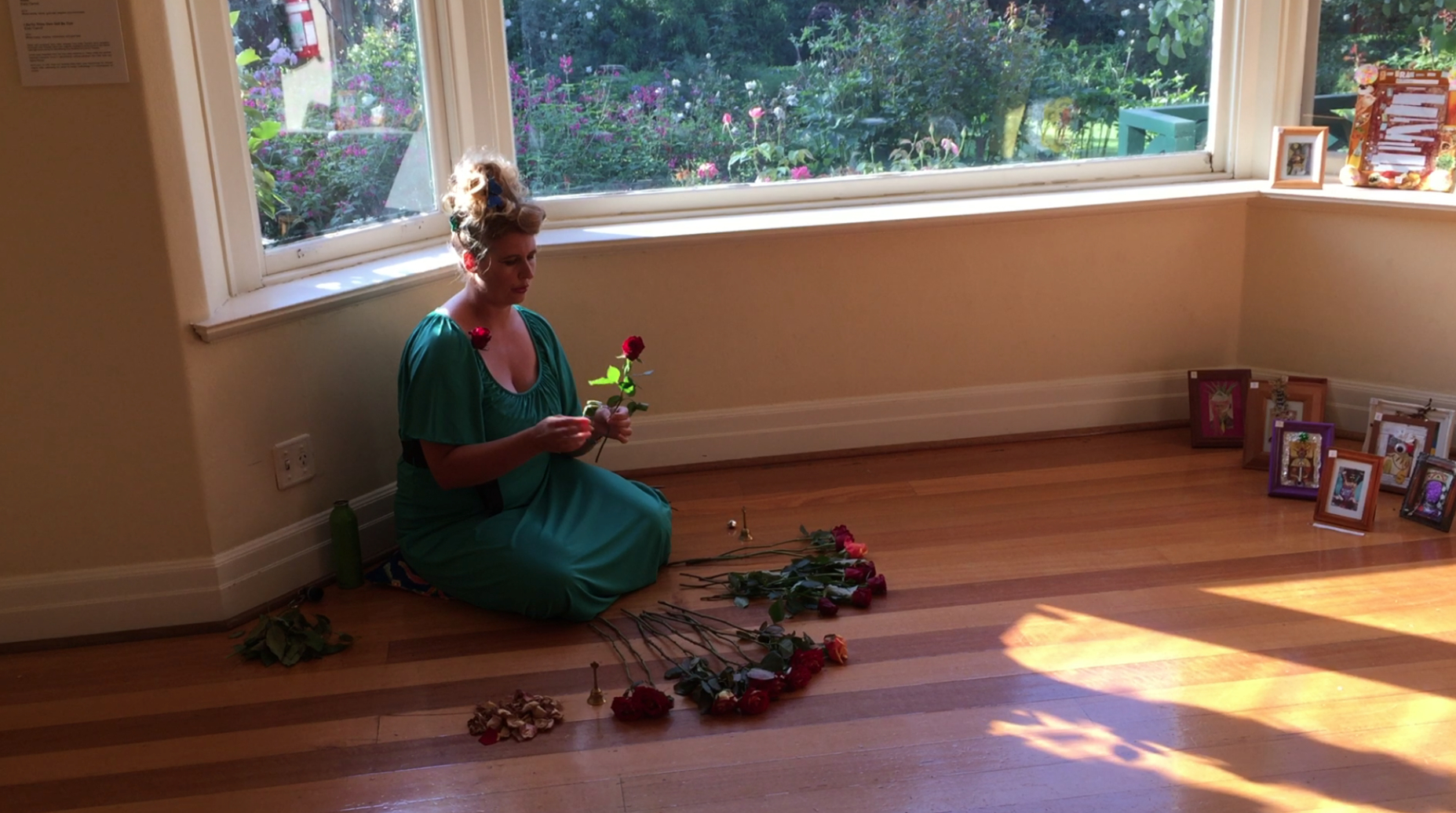
Sarah Wilmot is a Sound and Improvisational Voice Artist, and a Speech Pathologist based in Melbourne. She combines Voice, Breath, and Nature to create Soundscapes of fleeting melodies and moments using the mediums of audio recordings, multimedia and performance. Sarah uses the internal acoustic spaces of her body to explore the bridge between the internal psychic landscape and outer landscape. She views sound as a multi-sensory experience, seeking to invoke emotion, intellect and spirit. She searches for beauty in these landscapes to create mystical sounds that both soothe and inspire us anew.
- Image –Kylie Esler
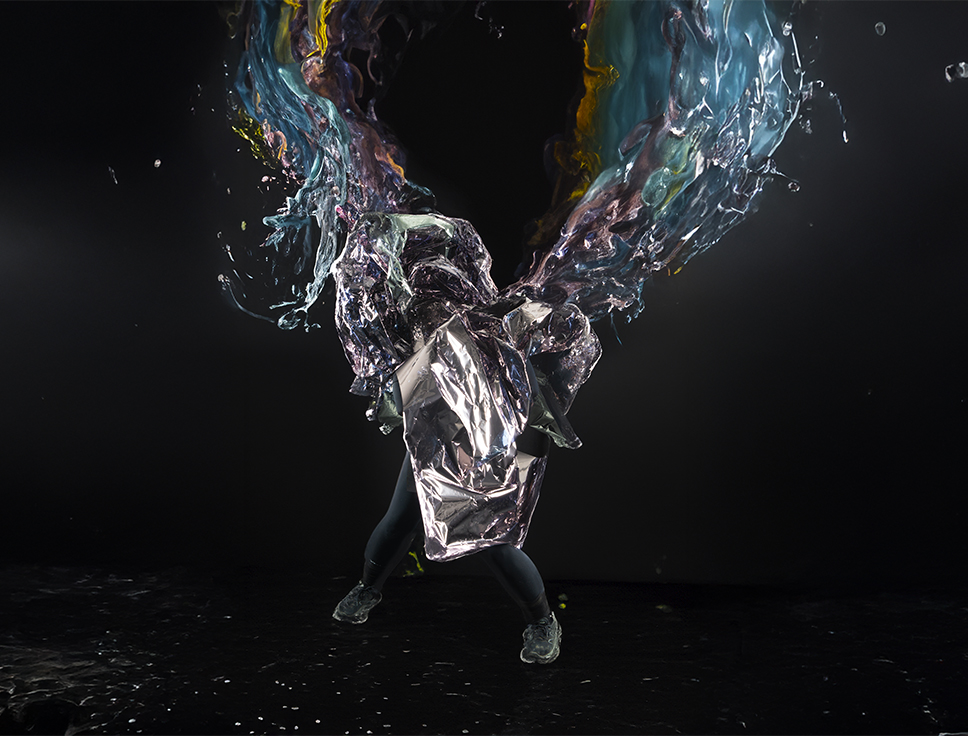
Anne Scott Wilson’s work explores the interplay of light, time, and the transcendental. Trained initially as a dancer, she focuses on the immediacy of light and the fleeting nature of time at the point of photographic capture. Her work contemplates mortality and the limits of the physical body, using light to evoke a meditative awareness of death. Influenced by spiritualist traditions, Wilson's art seeks a balance between the physical and the eternal, creating a sense of duality and an “opening” that acts as a portal between realms.
Wilson is a lecturer at Deakin University and active in curatorial and collaborative projects. She has received significant recognition, including an Australia Council for the Arts Development Grant, supporting her research with ARS Electronica. Additionally, she earned her PhD from Monash University with a focus on subjective studio practices.

Felix Wilson is working primarily with photographic images to engage viewers with some of the complexities and paradoxes of the human relationship to nature. For Wilson these are the most urgent questions of our time. He is particularly interested in the ways that images can be employed to draw out the connections between disparate ecological phenomena across spatial and temporal gaps and to bring viewers into new understandings without overtly didactic approaches.
Wilson is currently completing a PhD at RMIT University where his project explores using a photography based visual poetics as a strategy to explore the ecologies of the contemporary night-time city, through case studies in Melbourne and Berlin which have drawn out the interrelationships between brown coal and artificial light, within a context of global climate change and ecological crisis.
